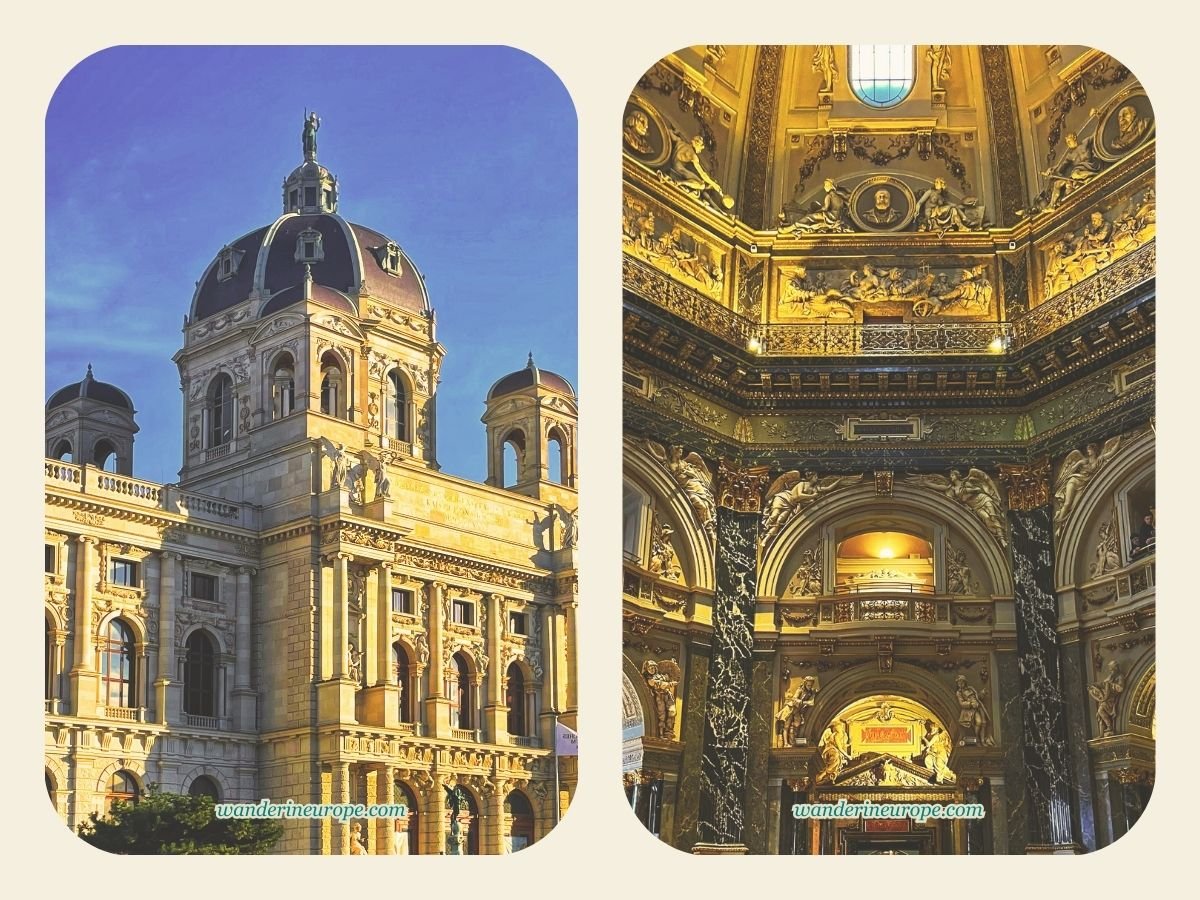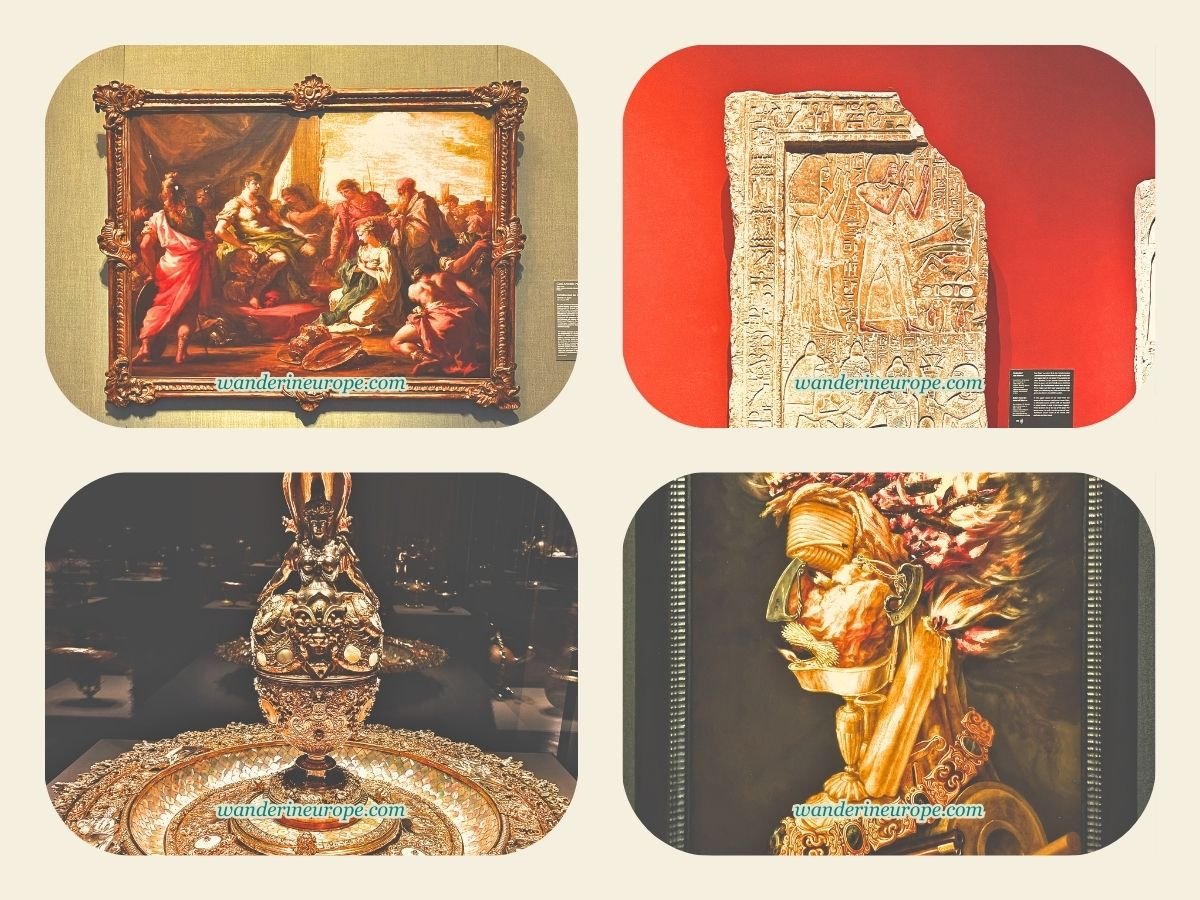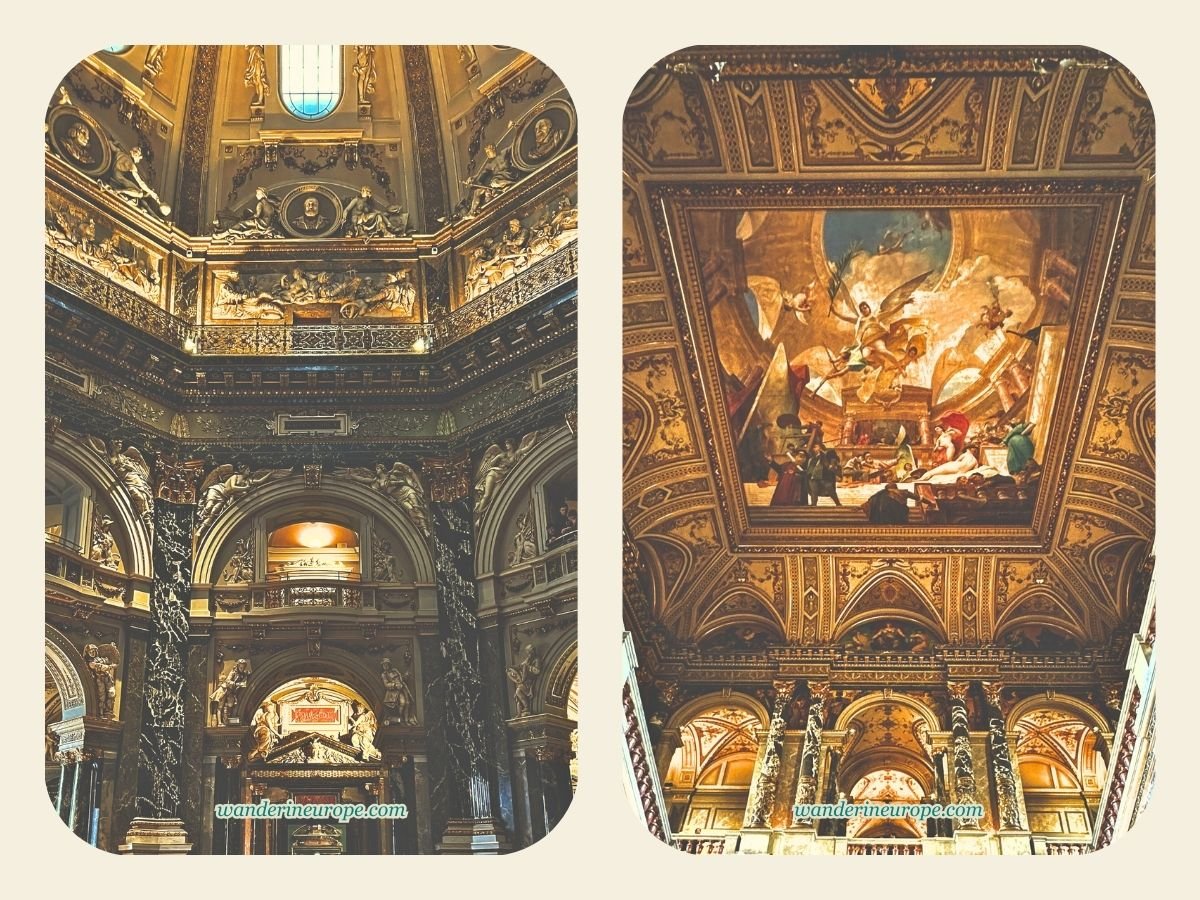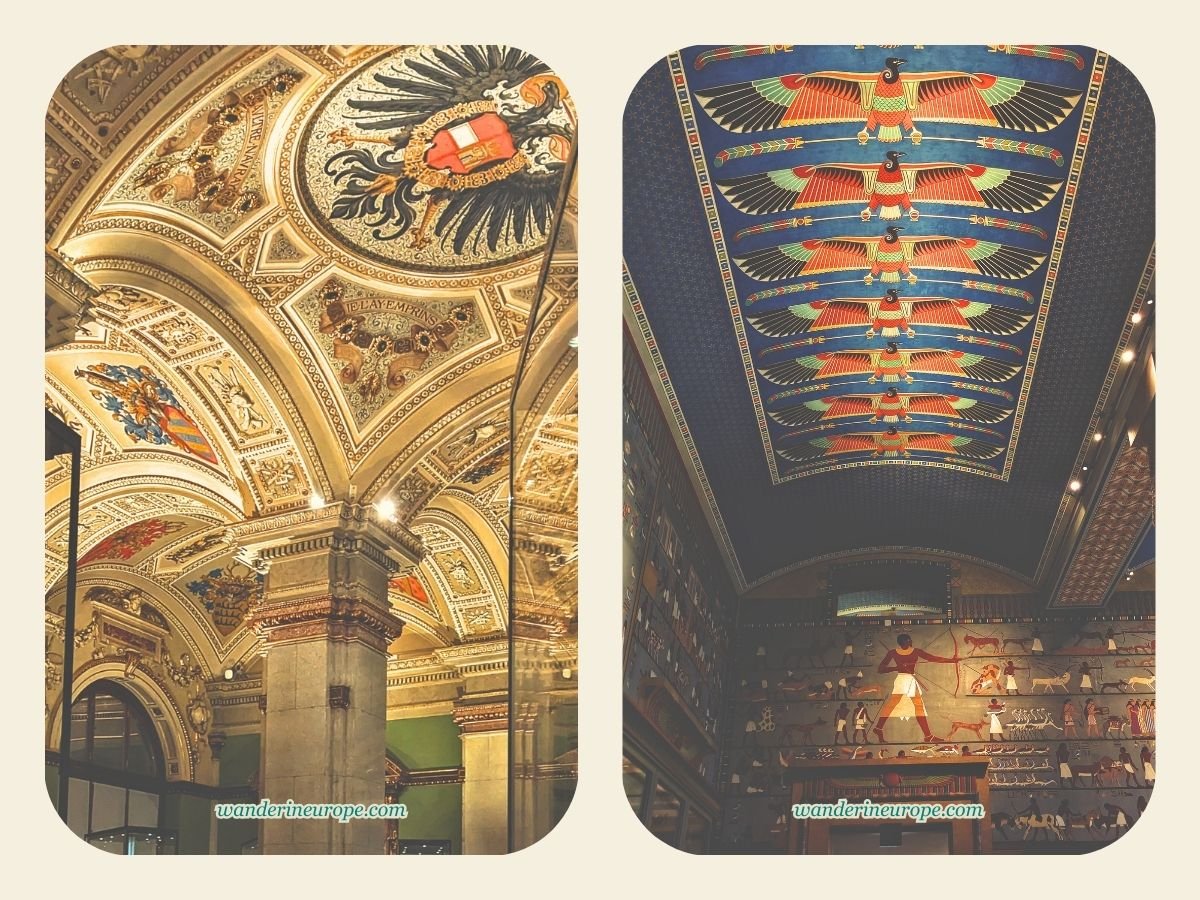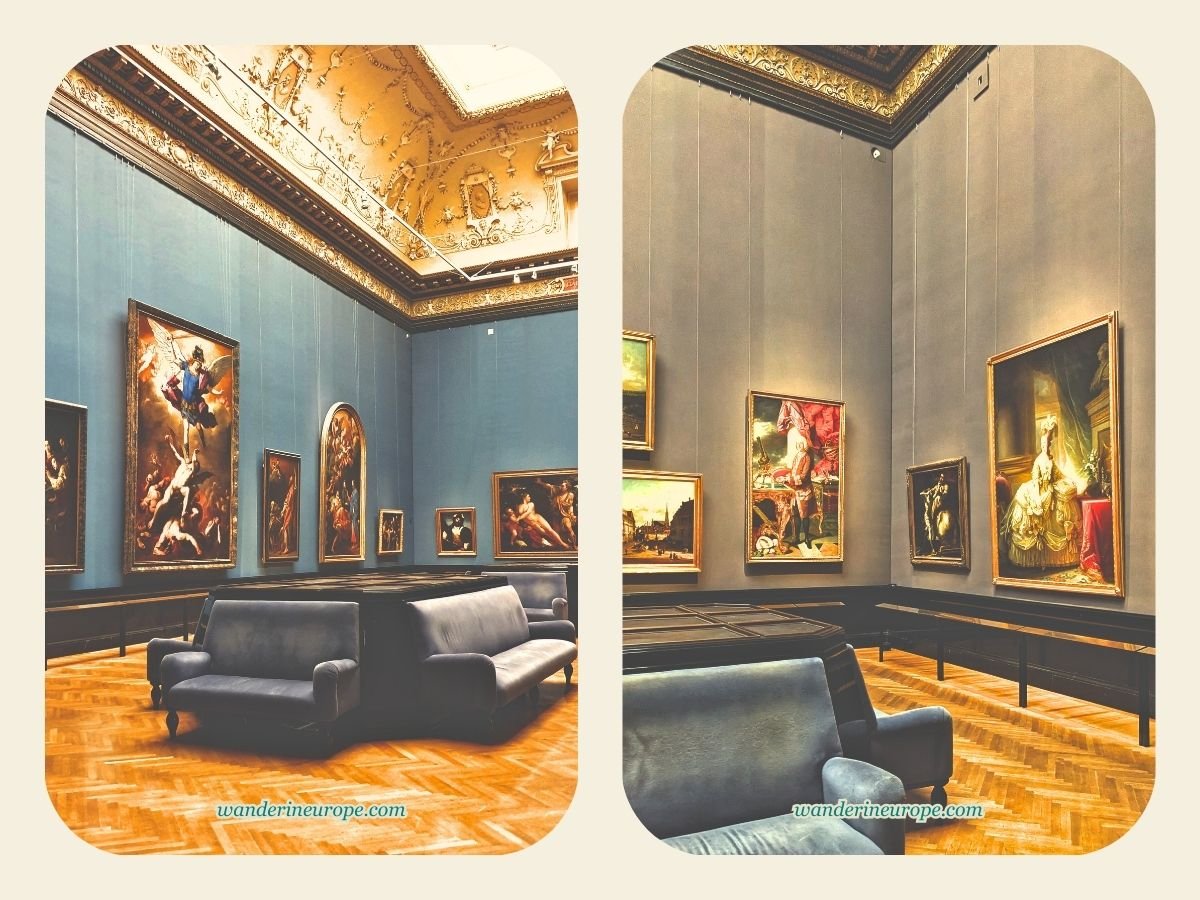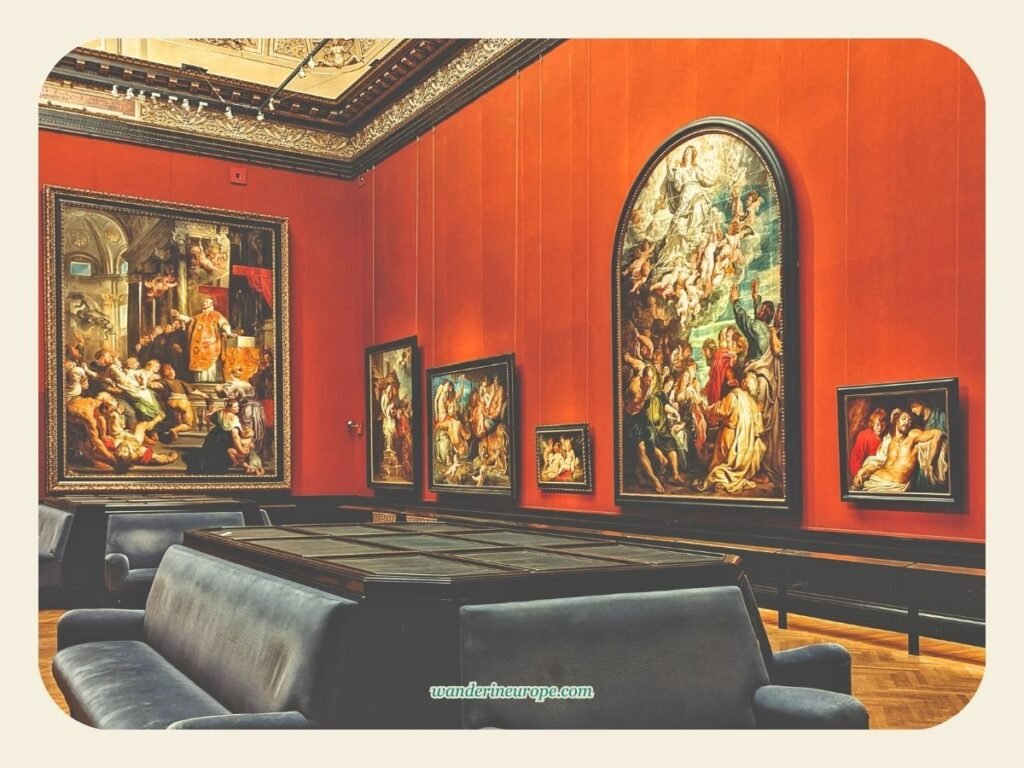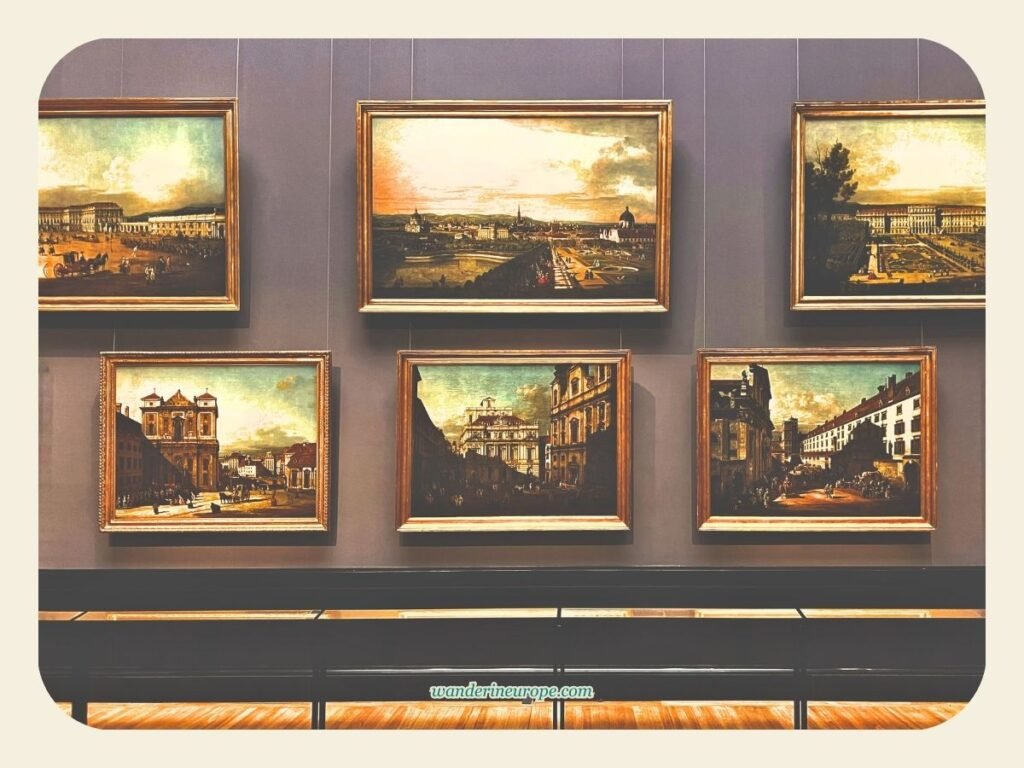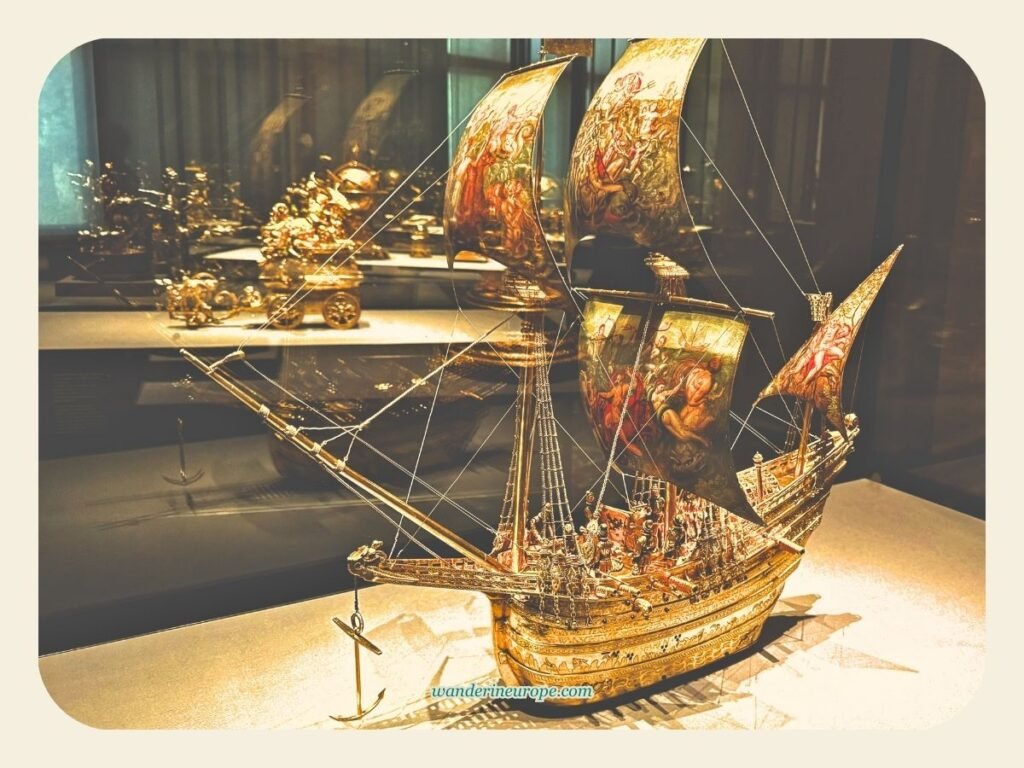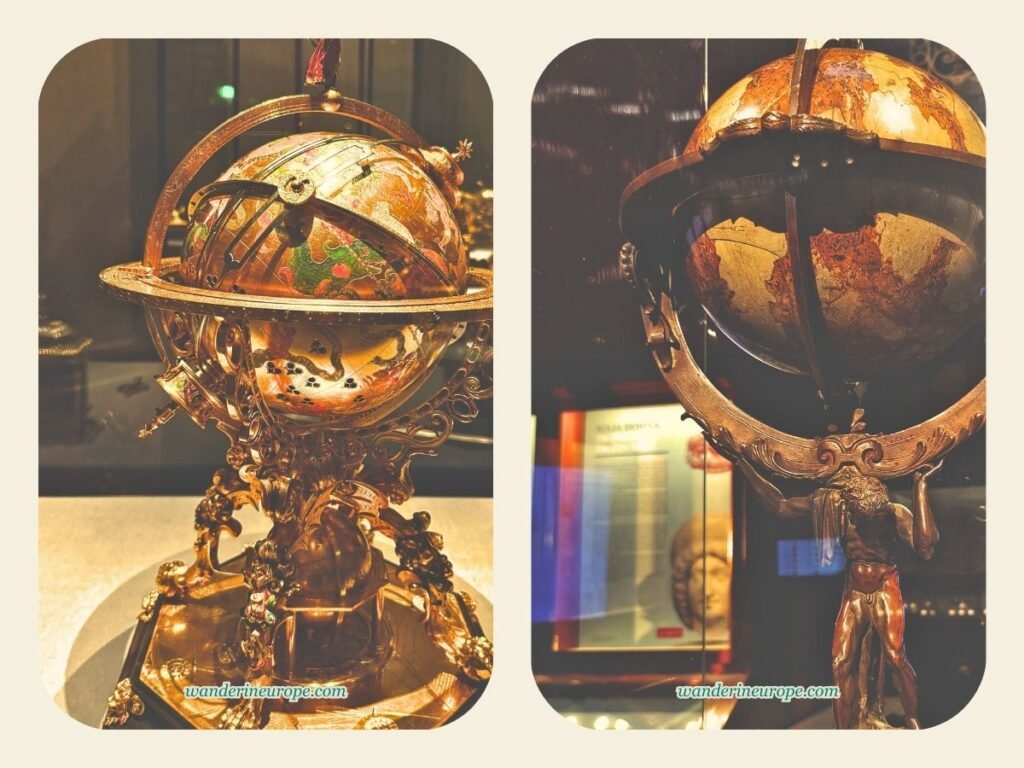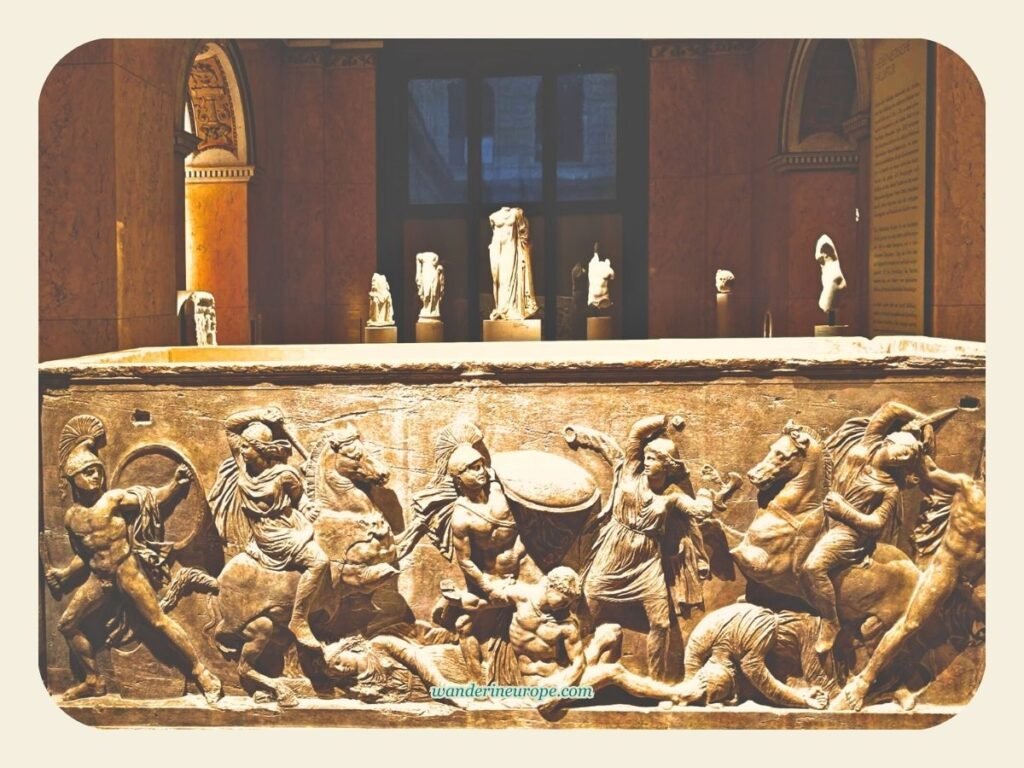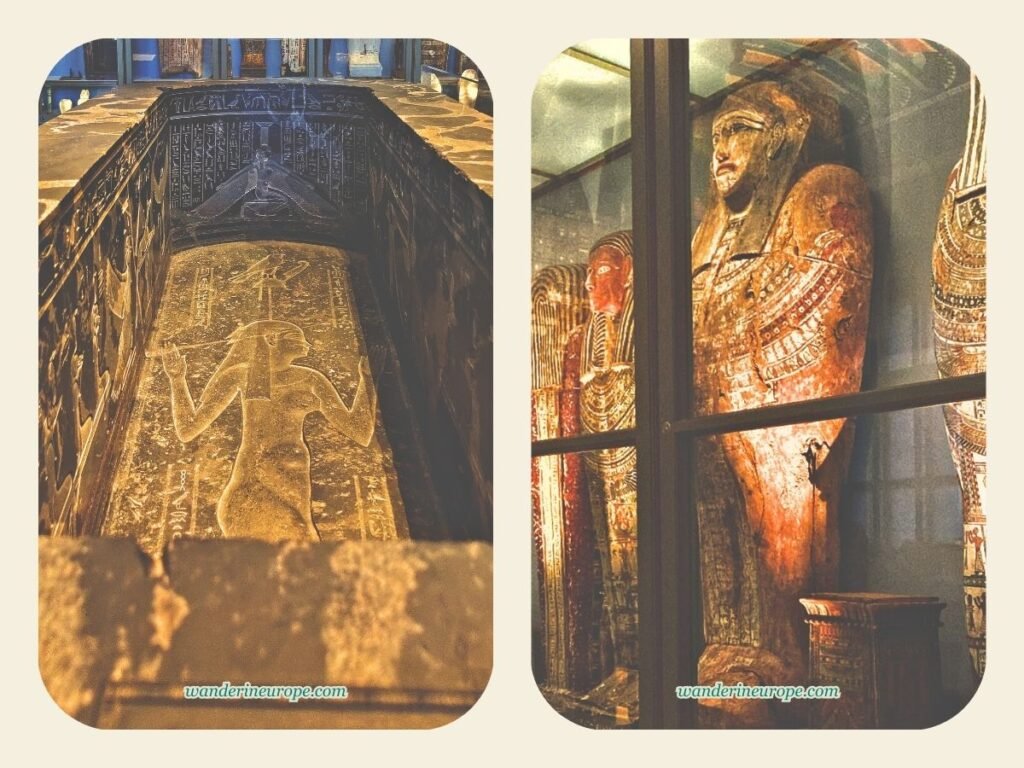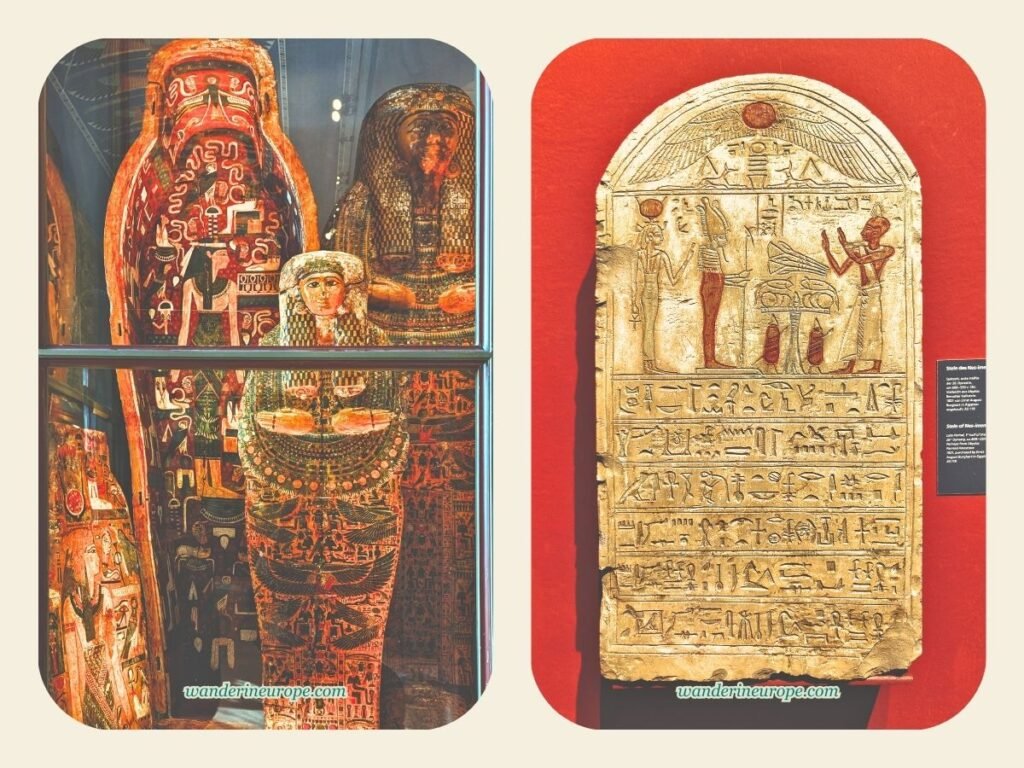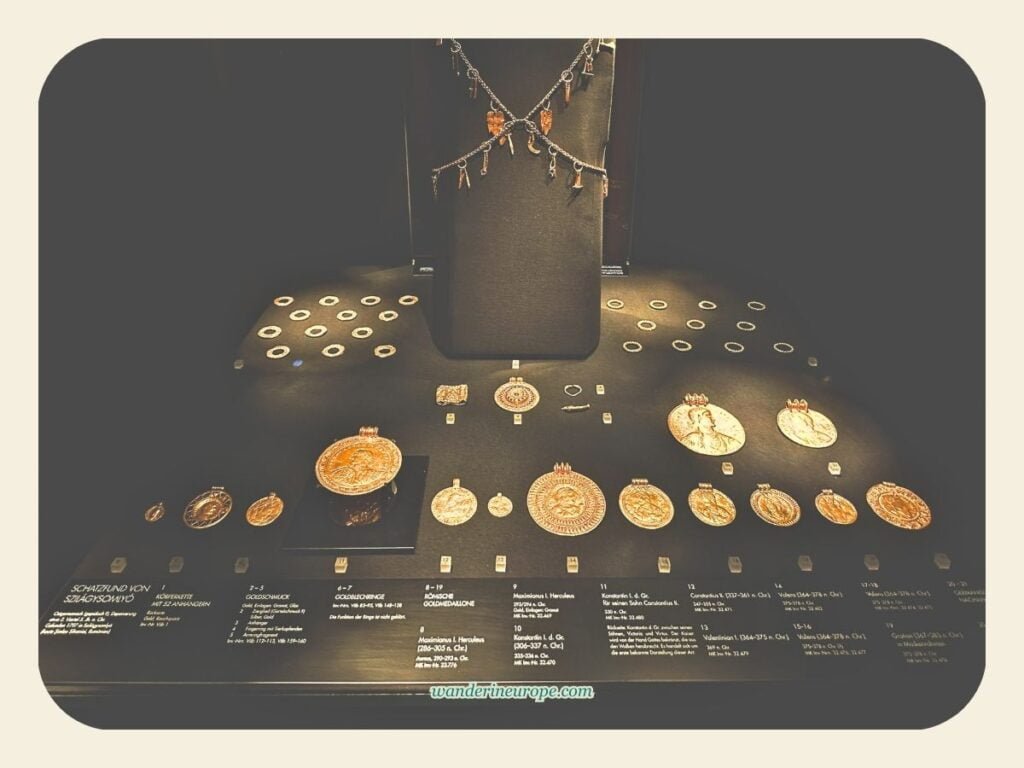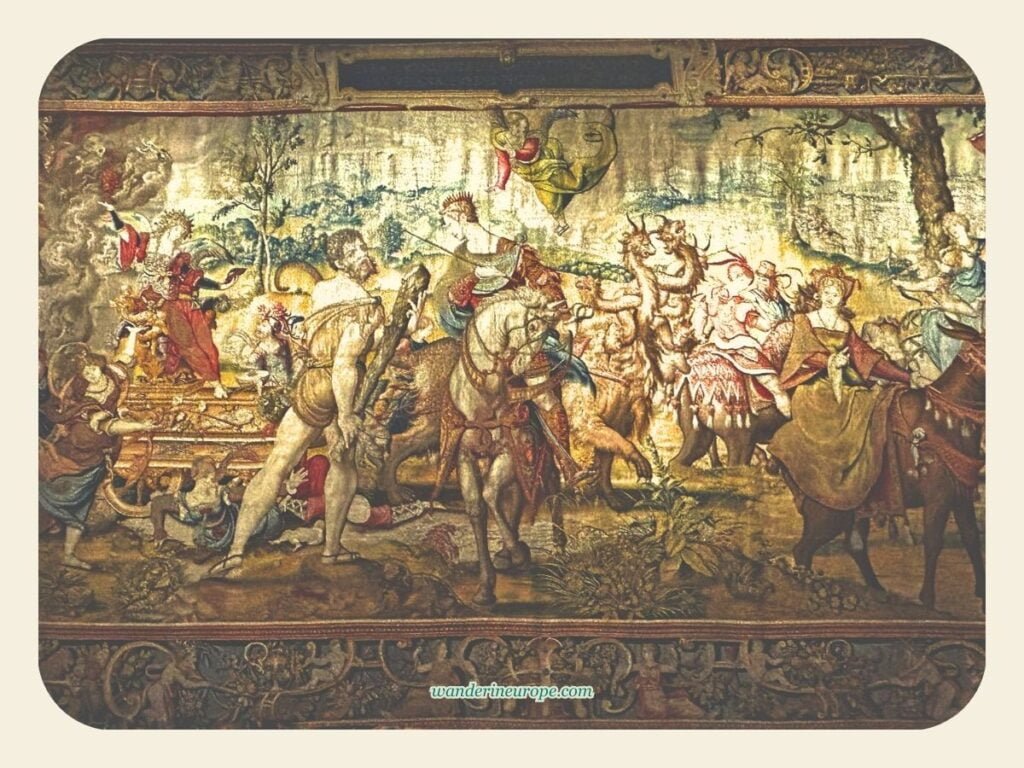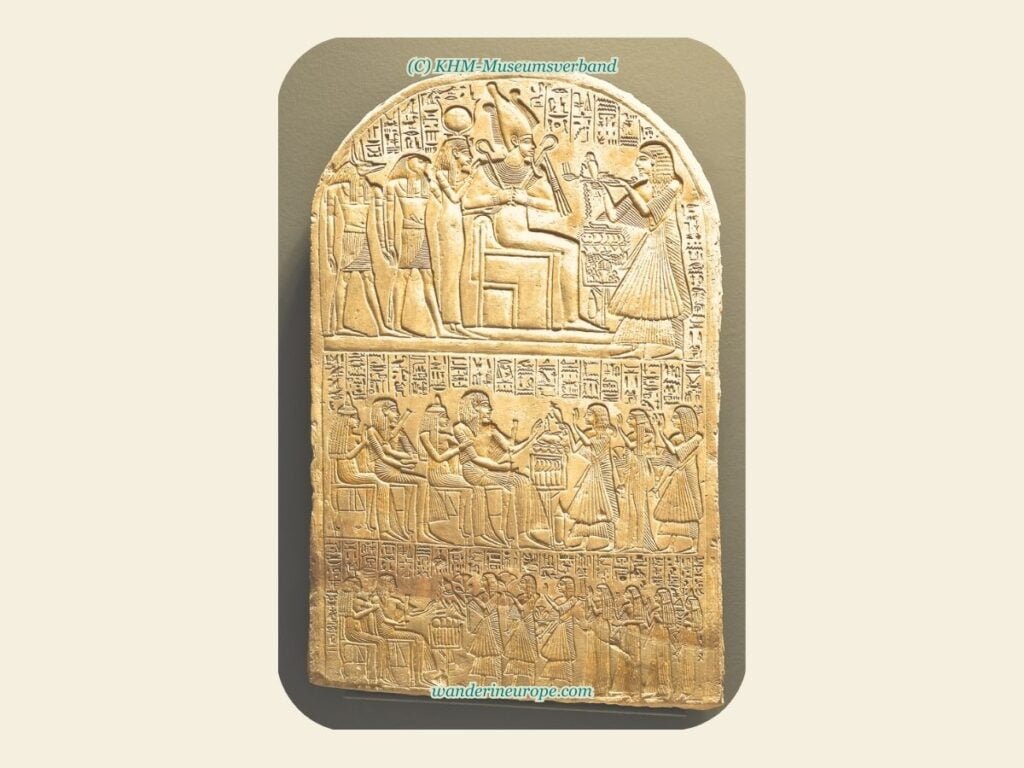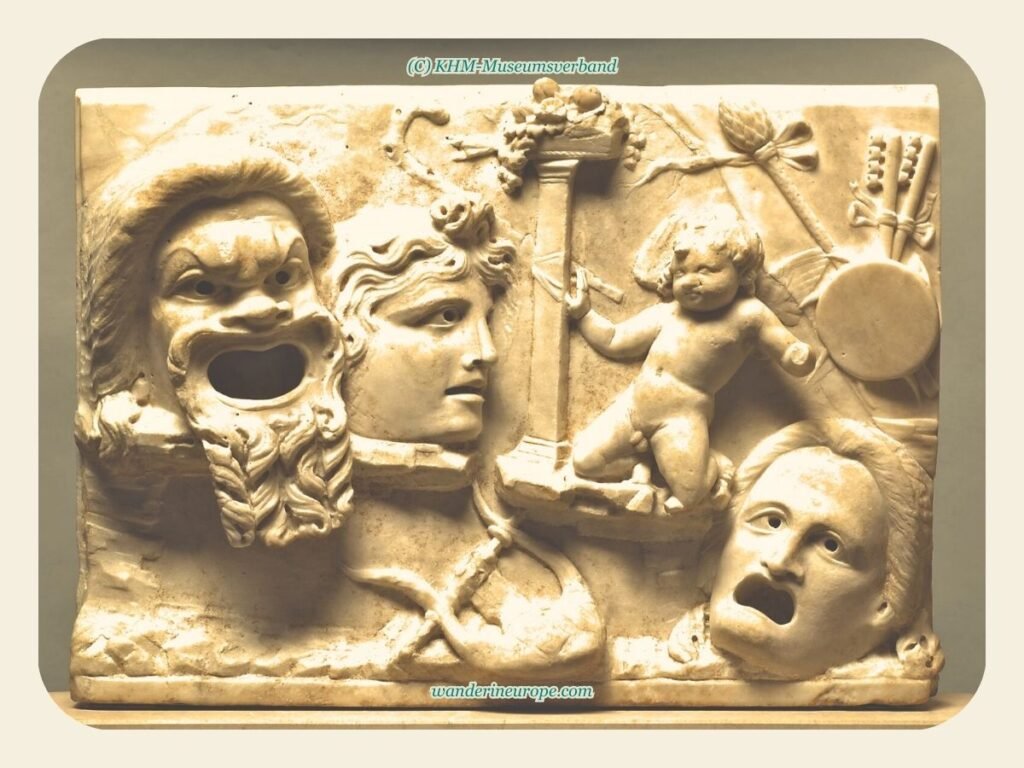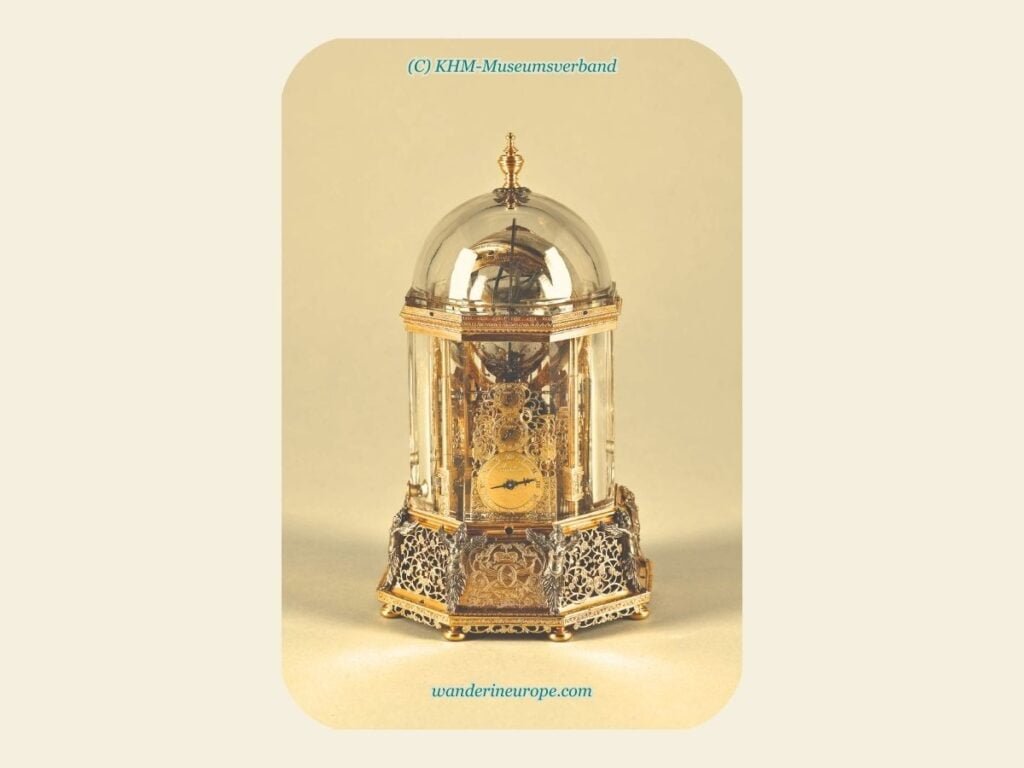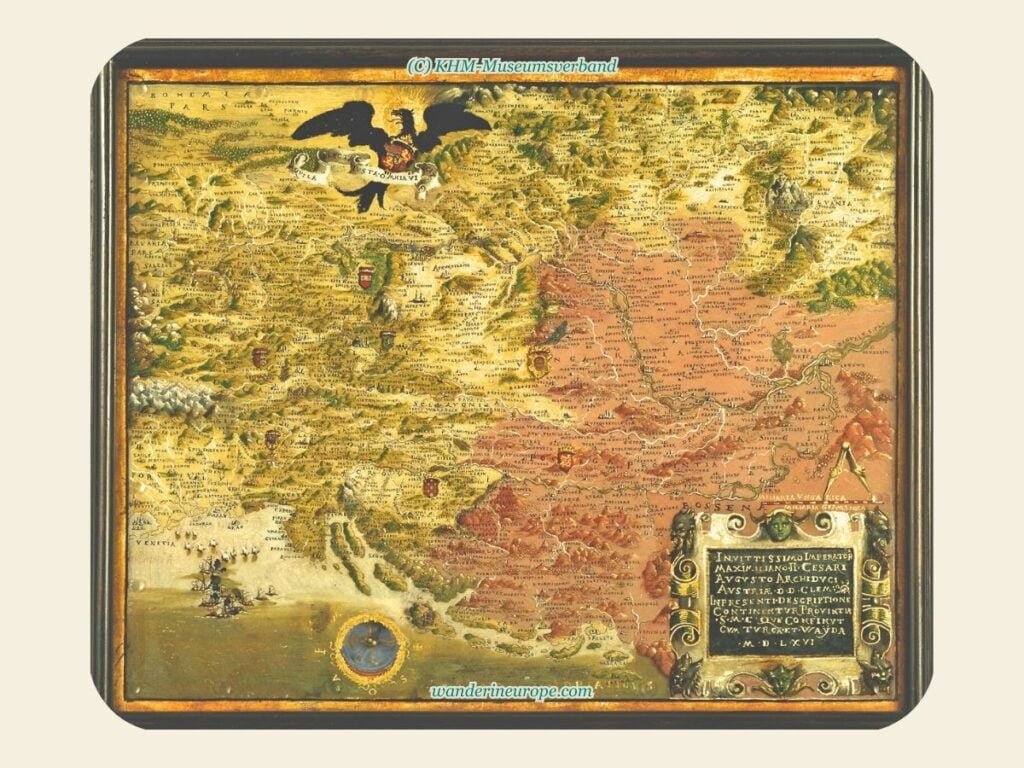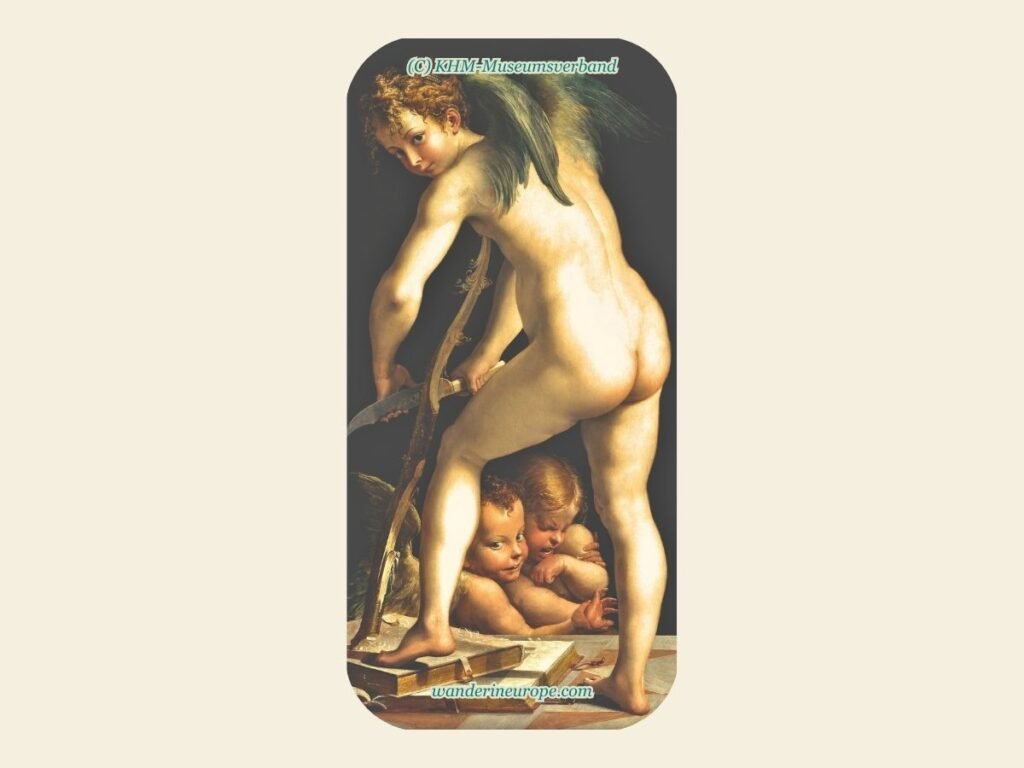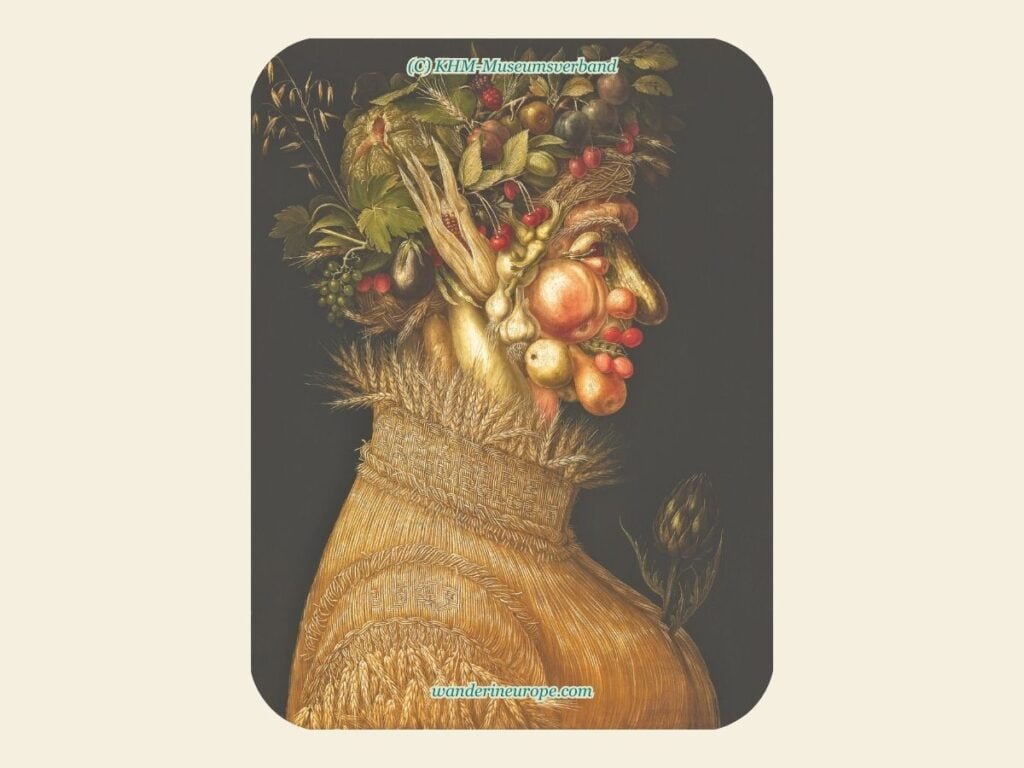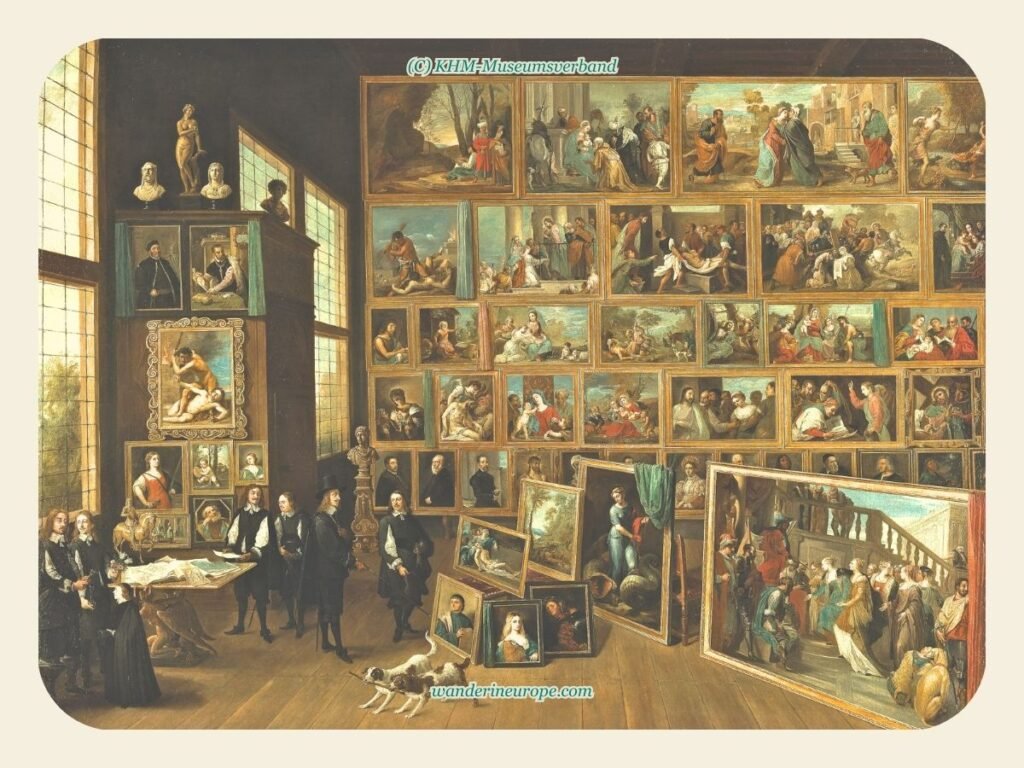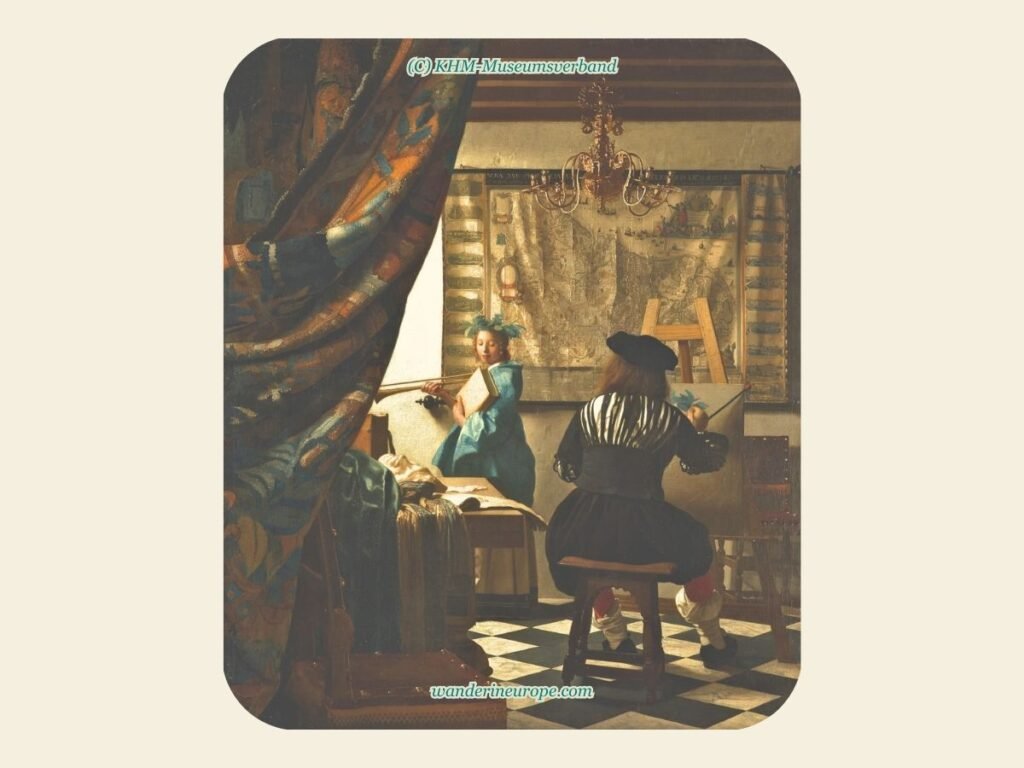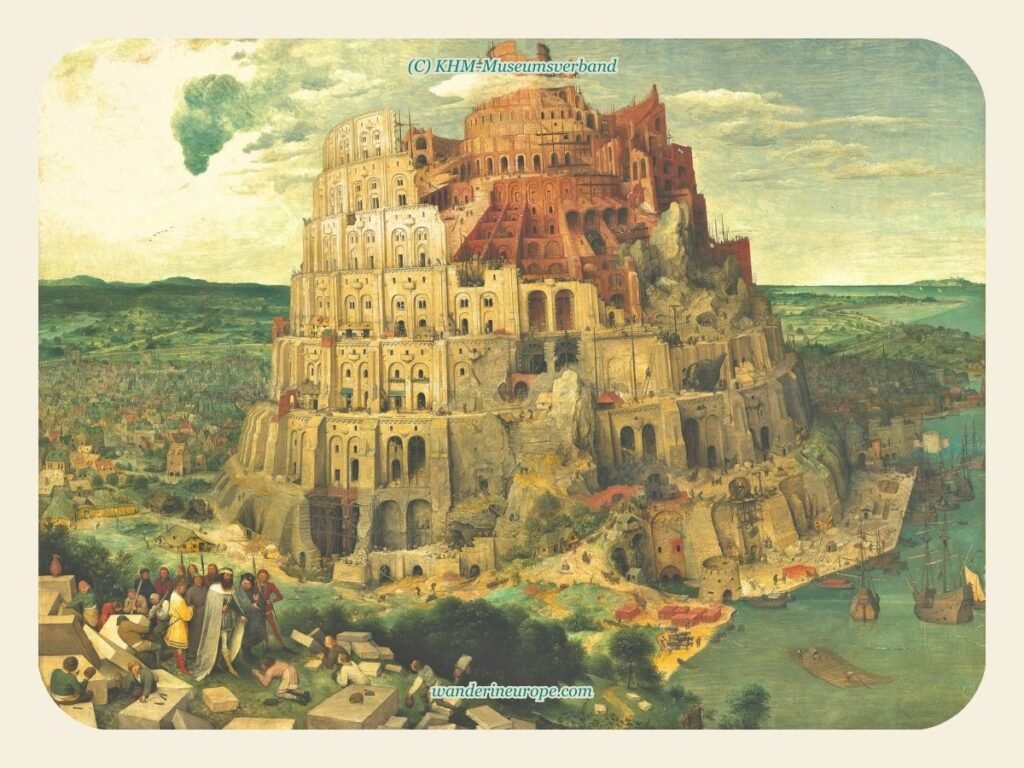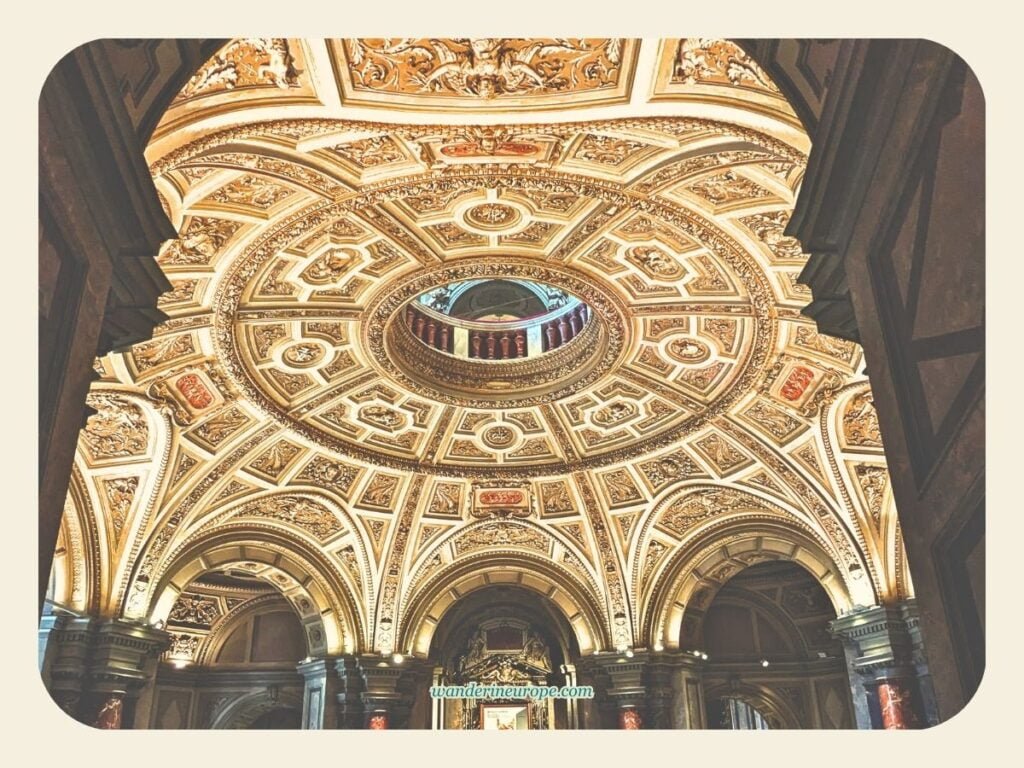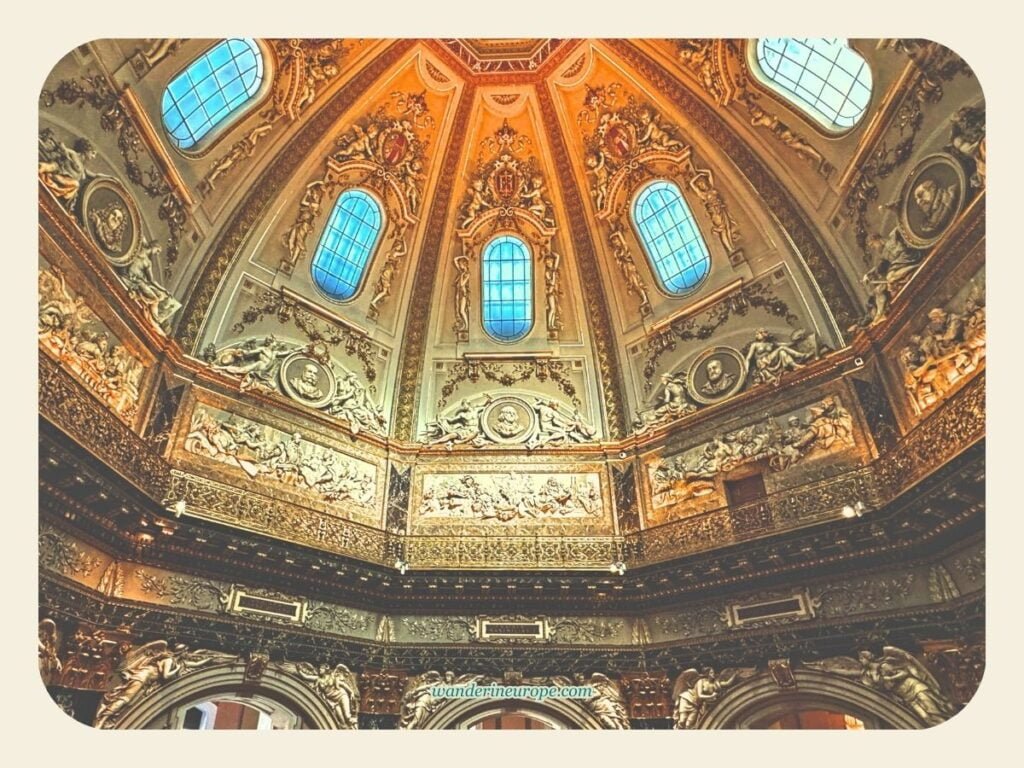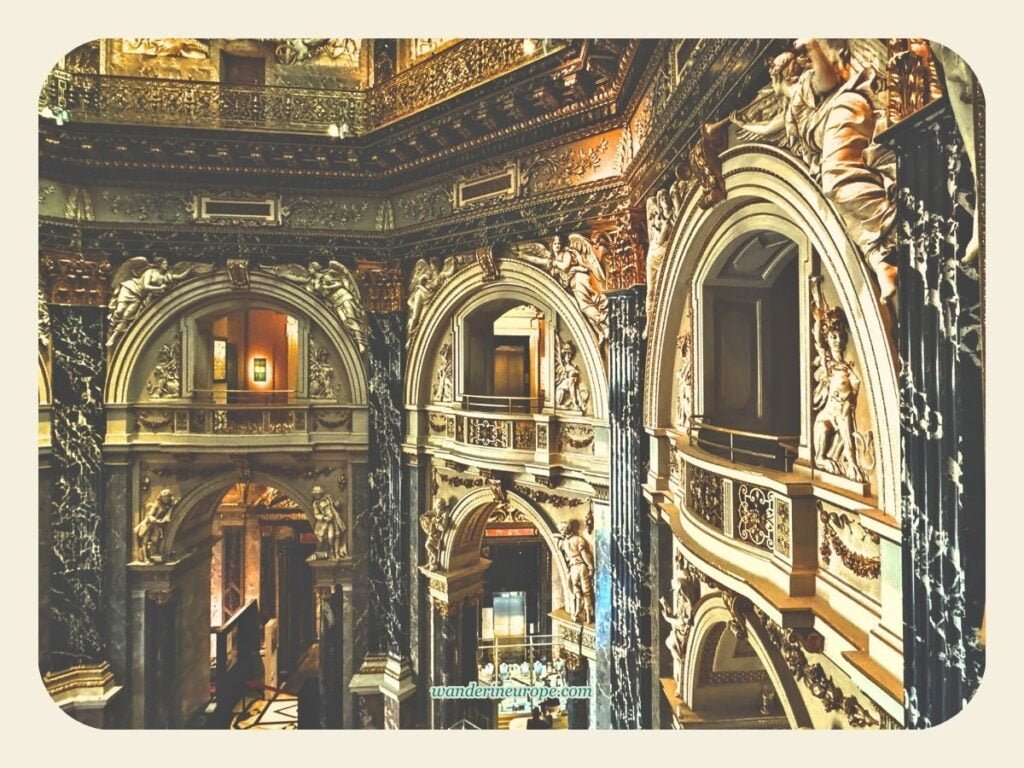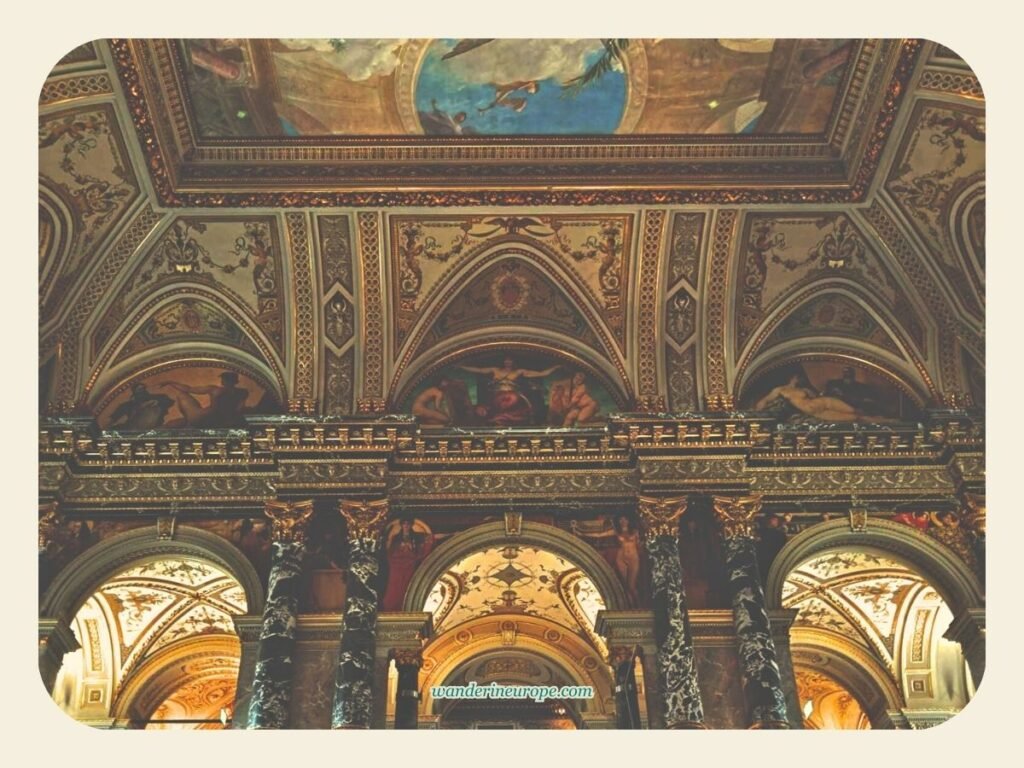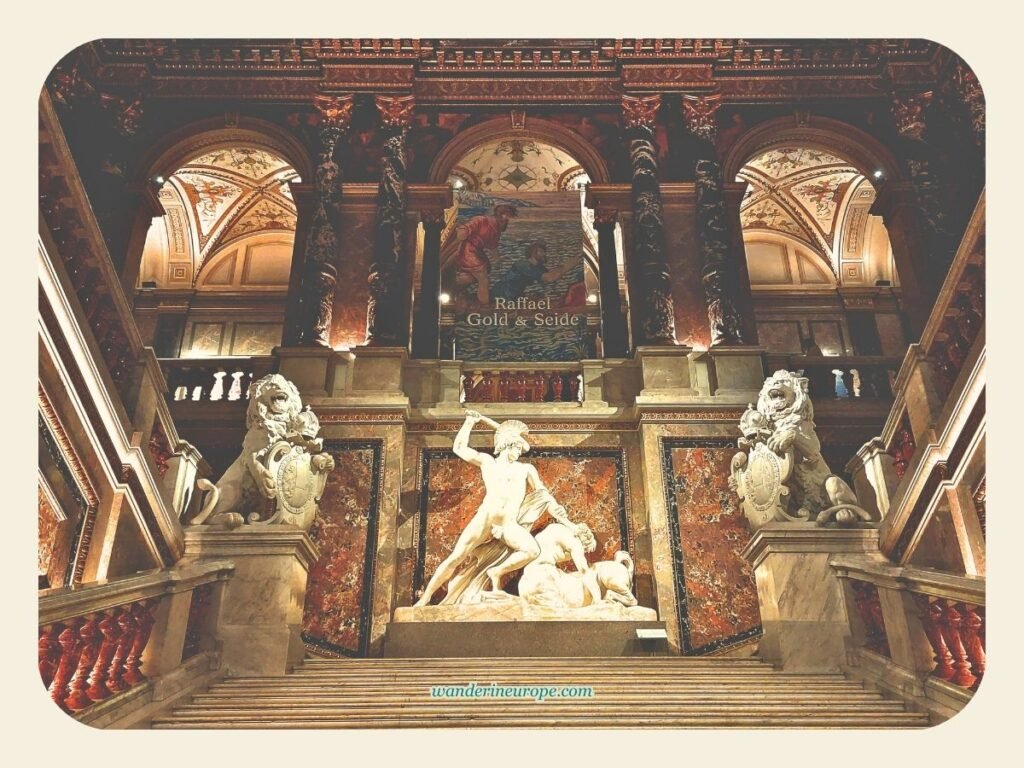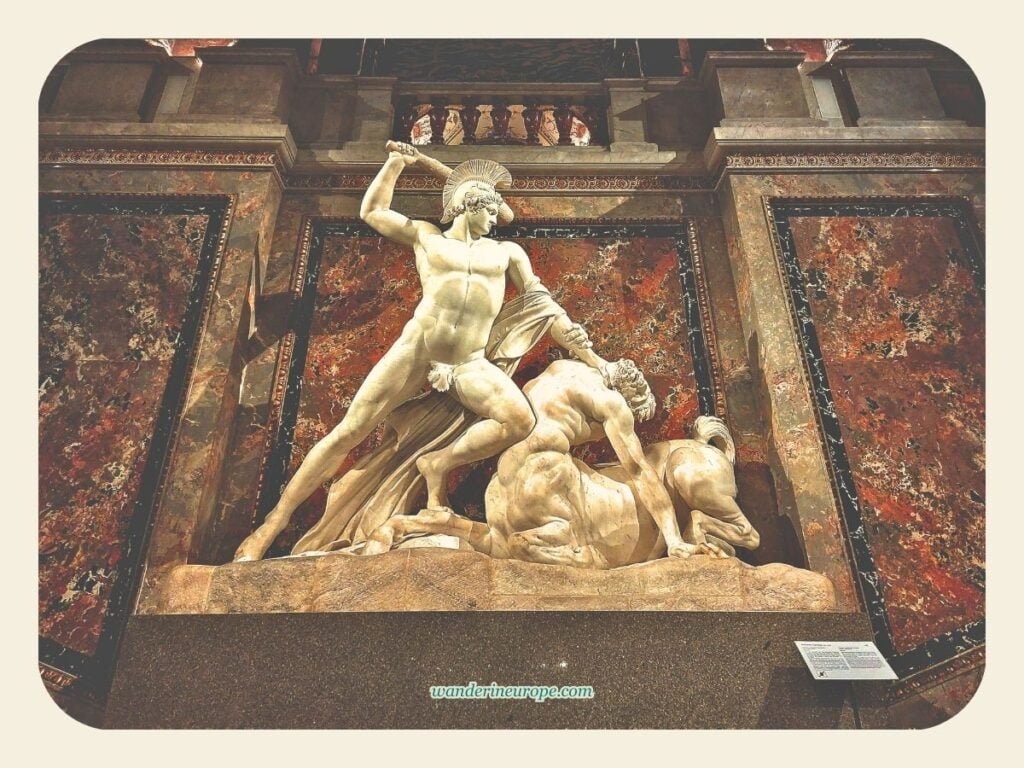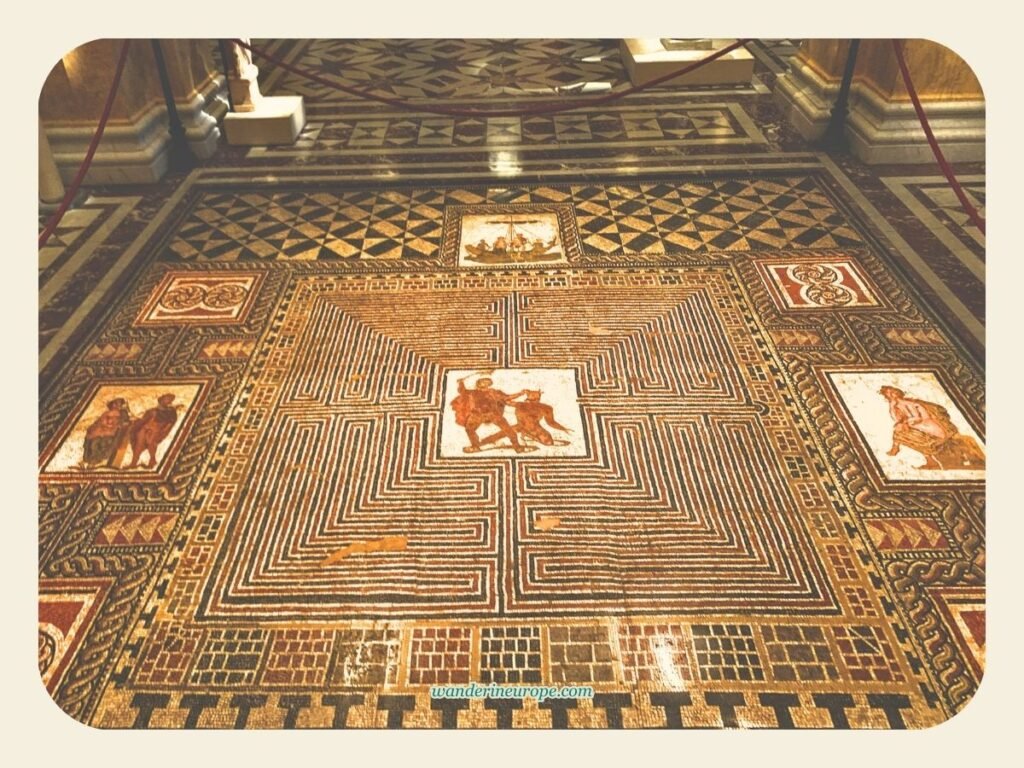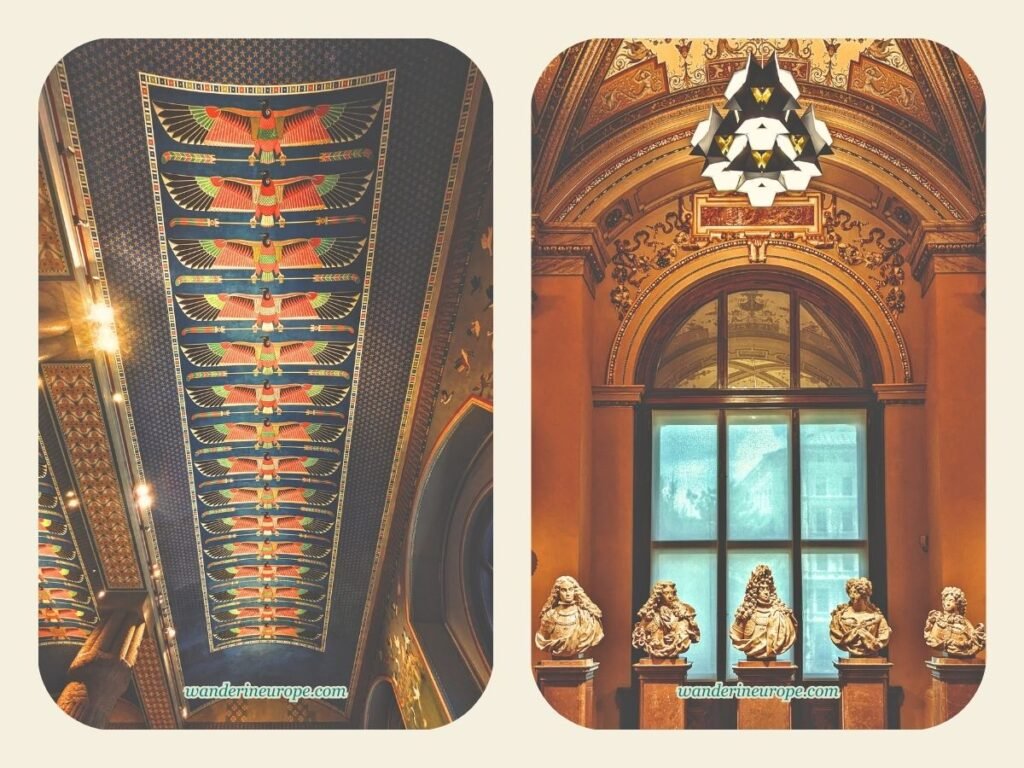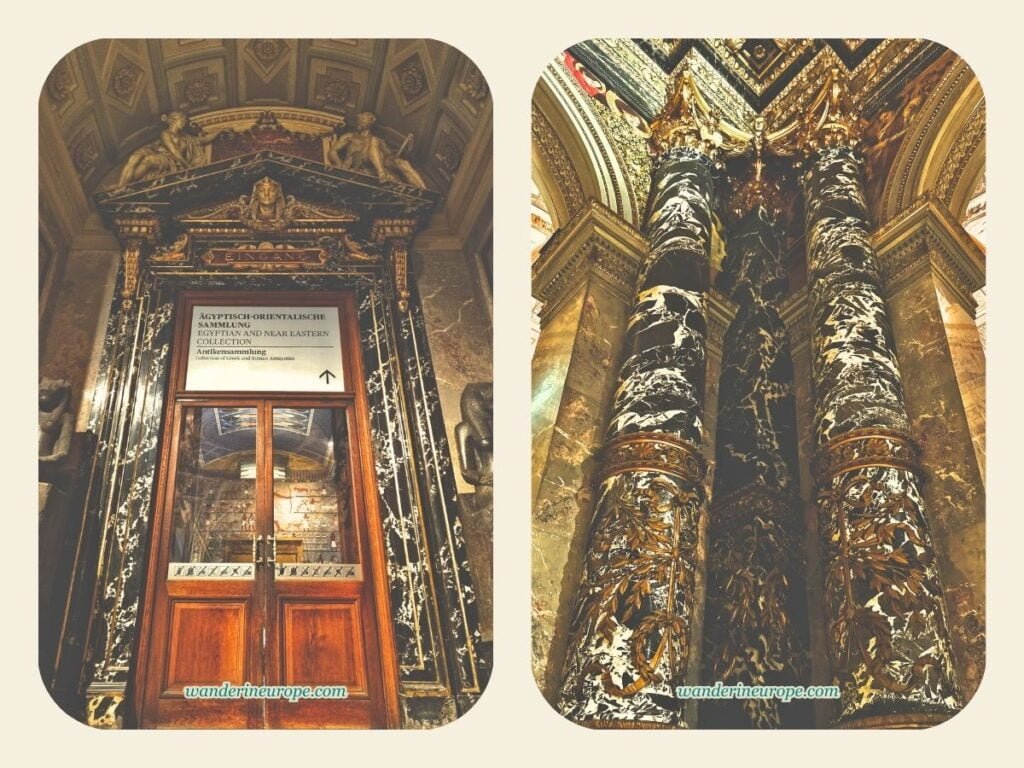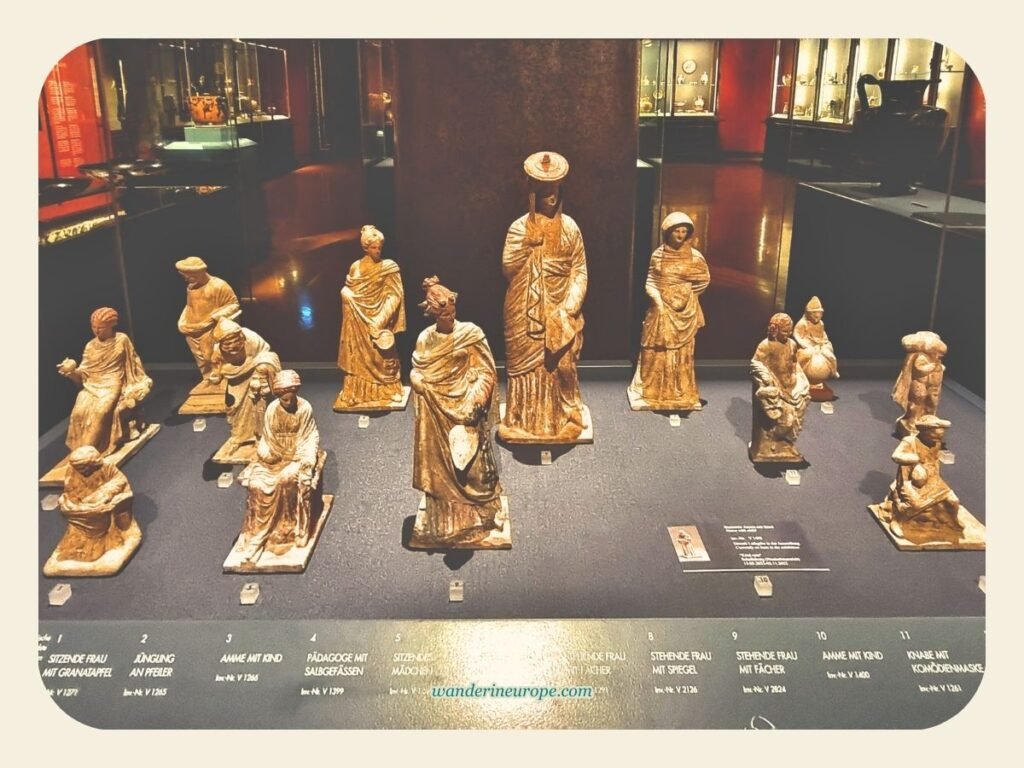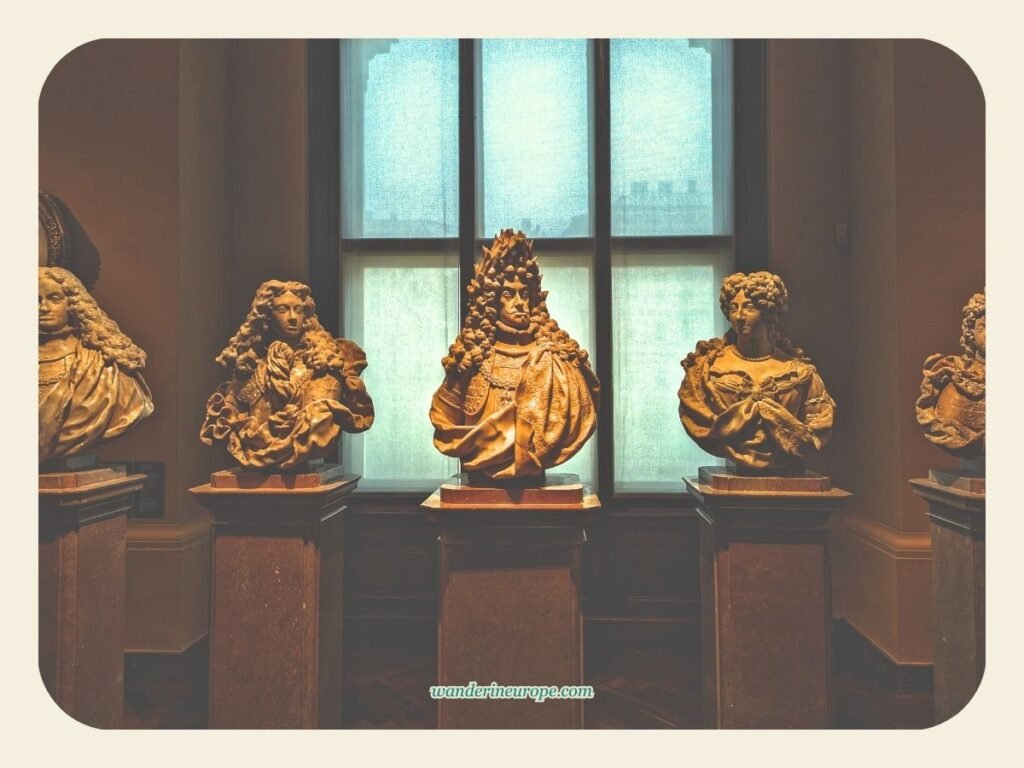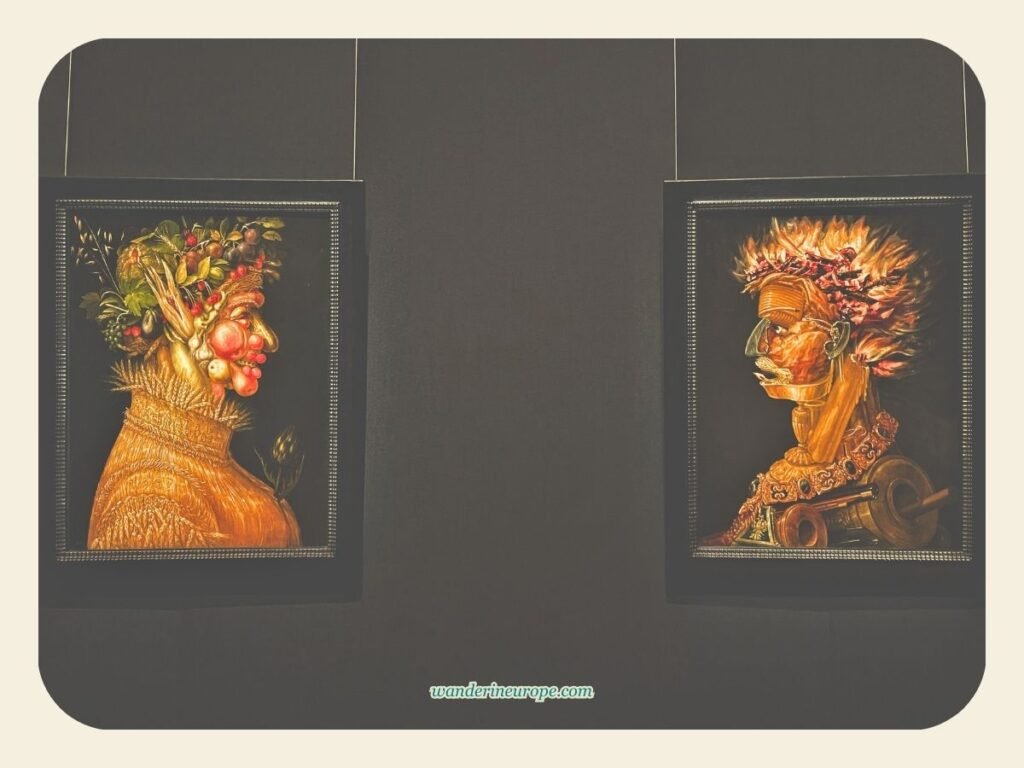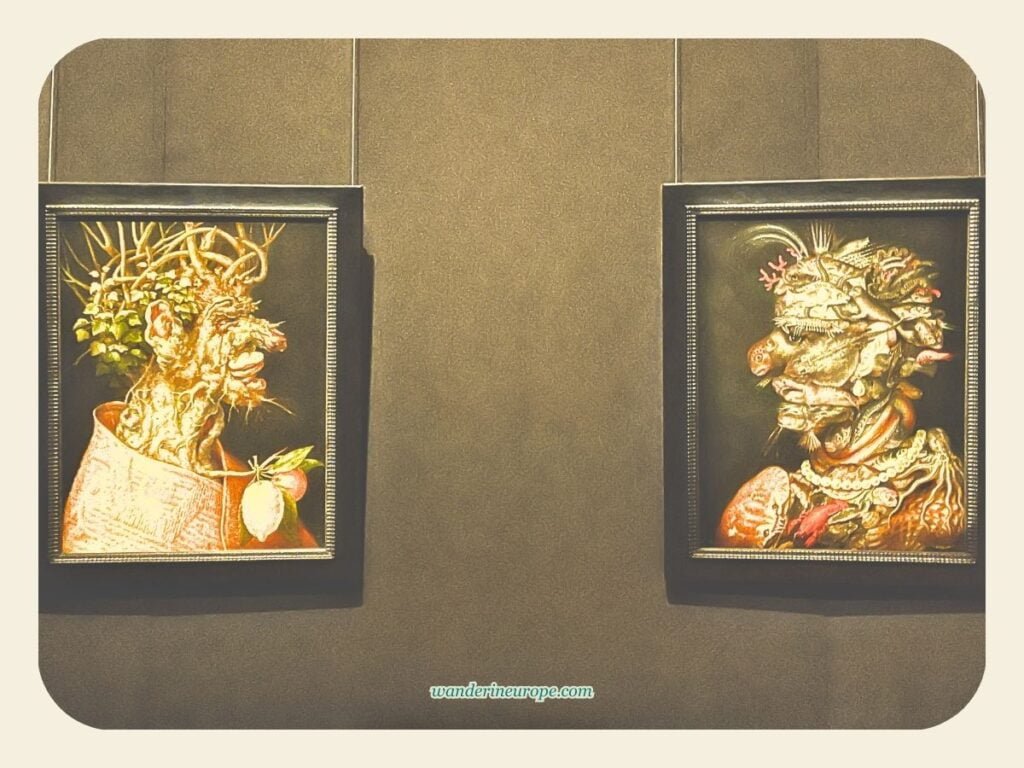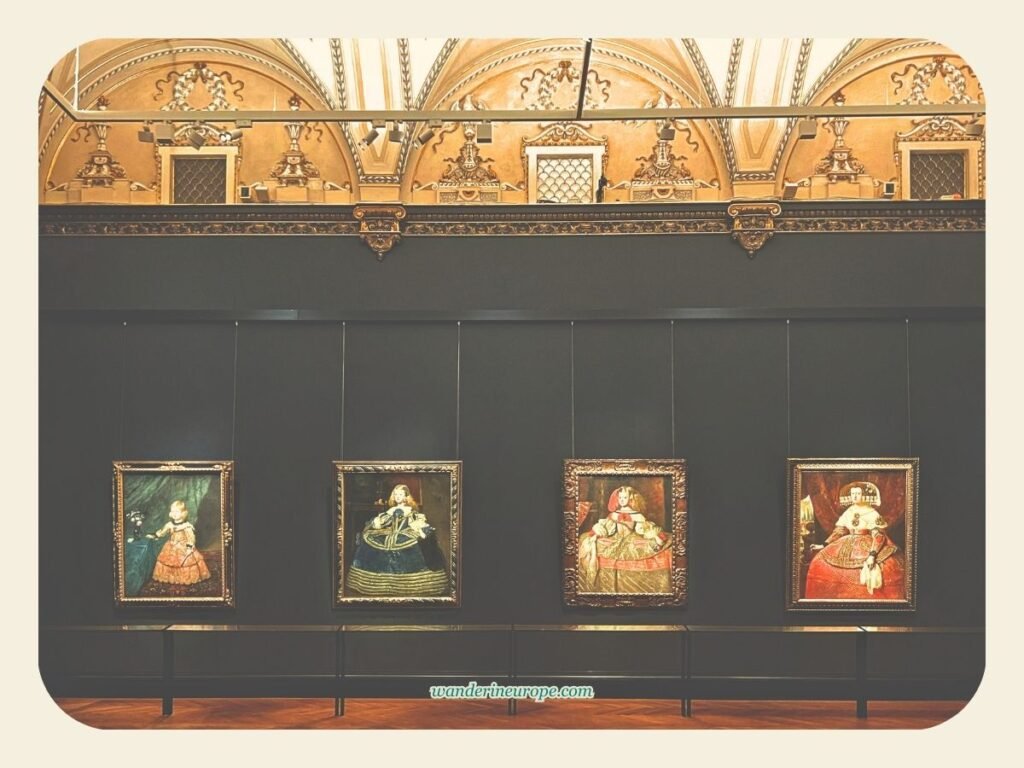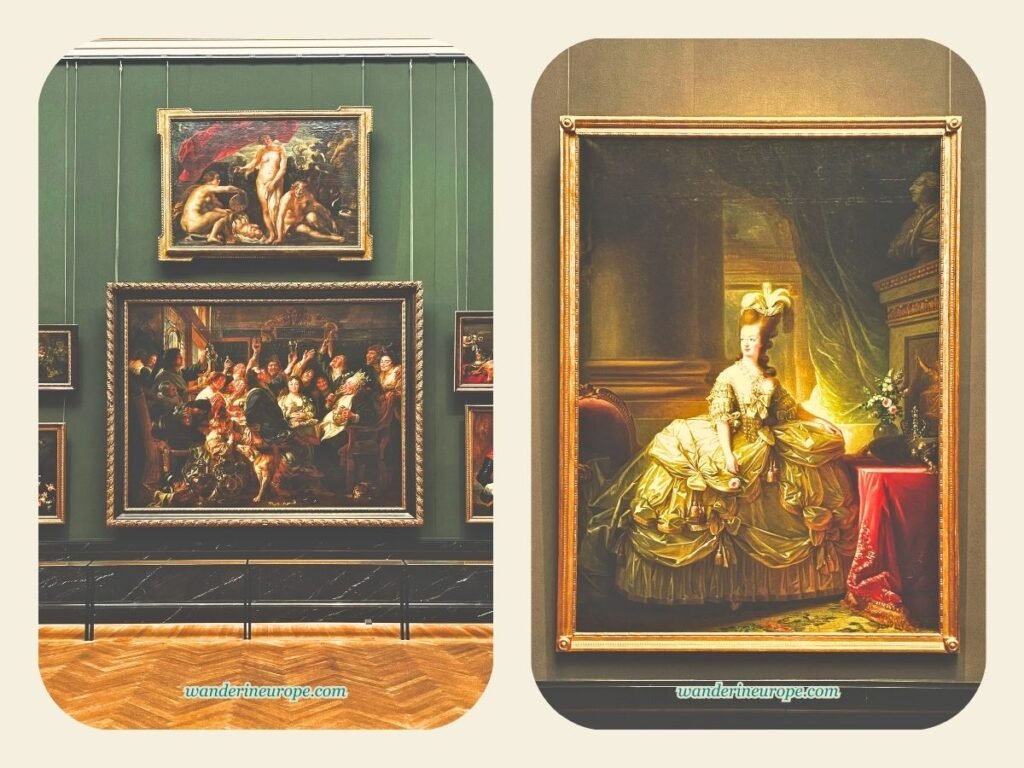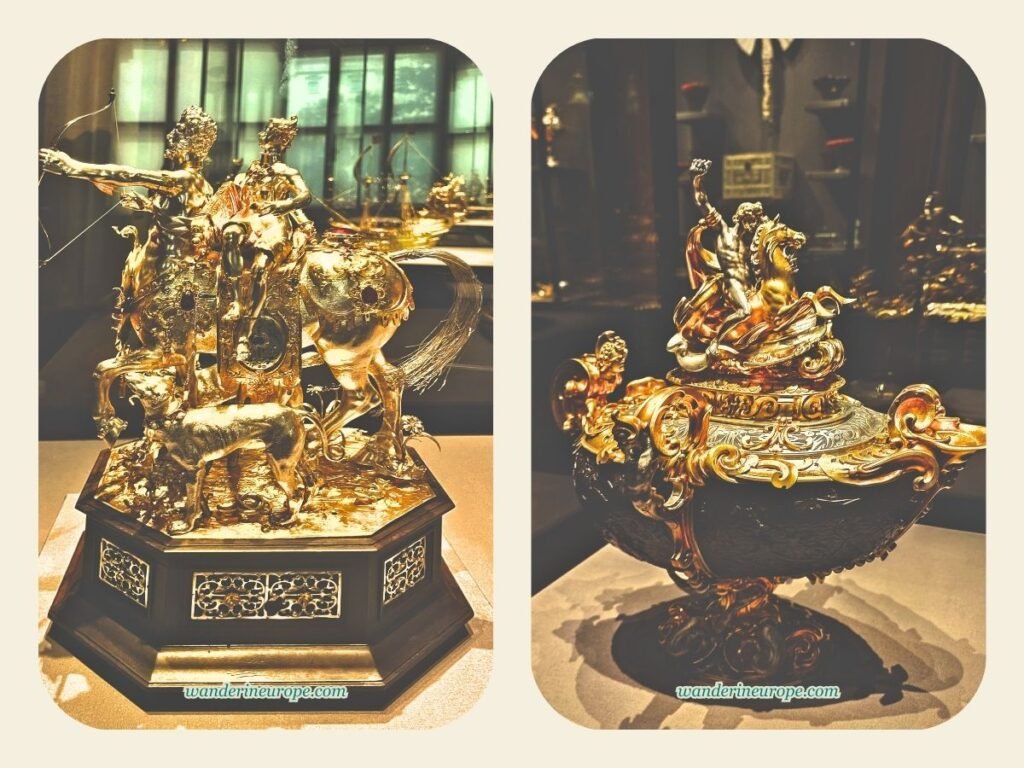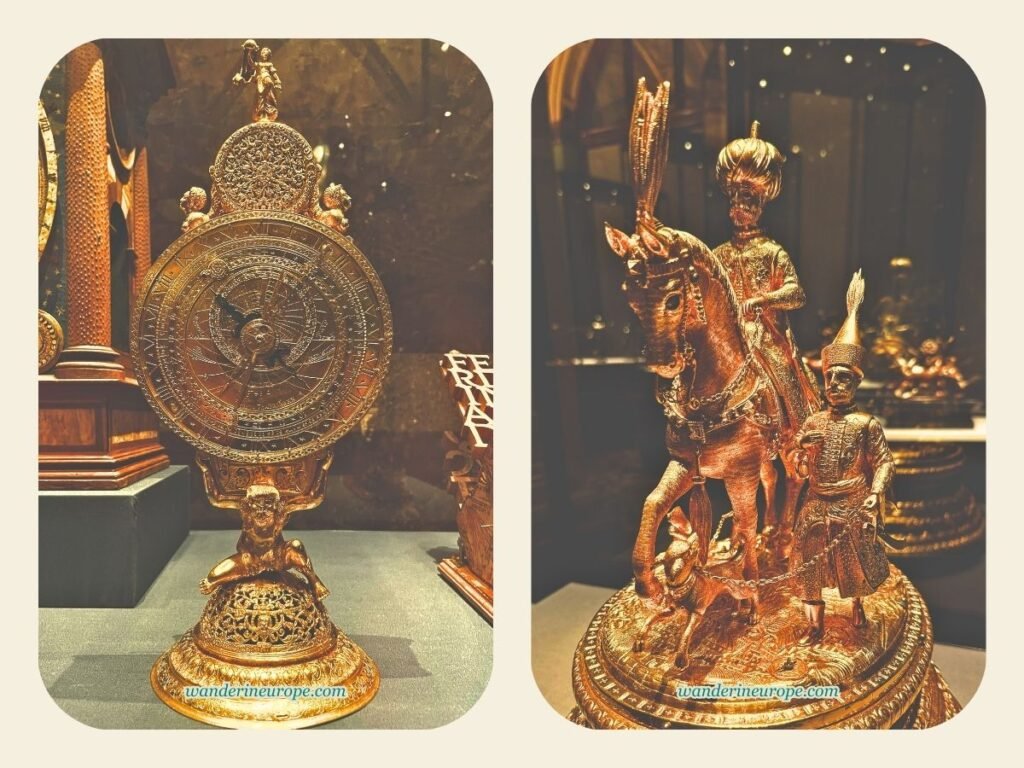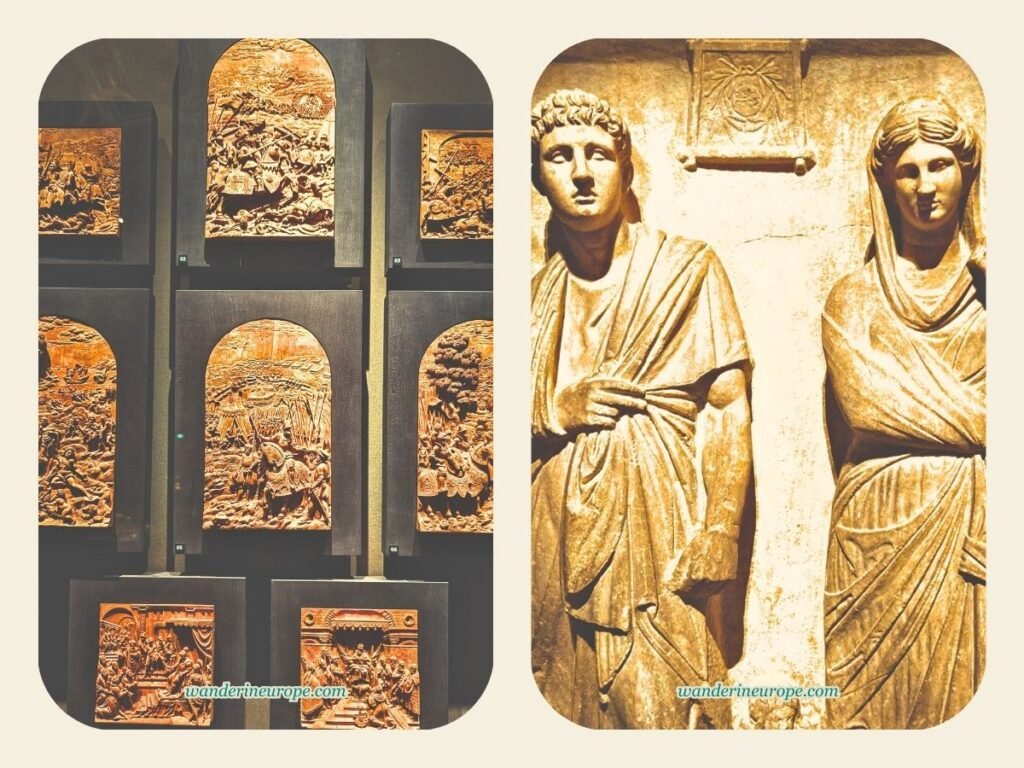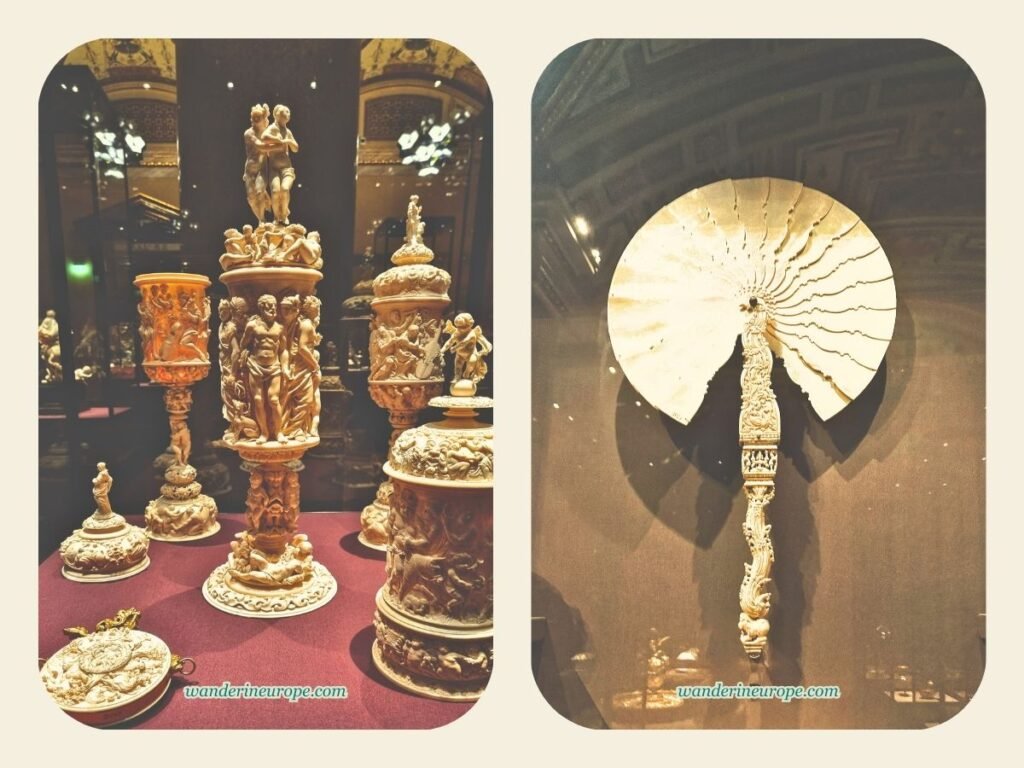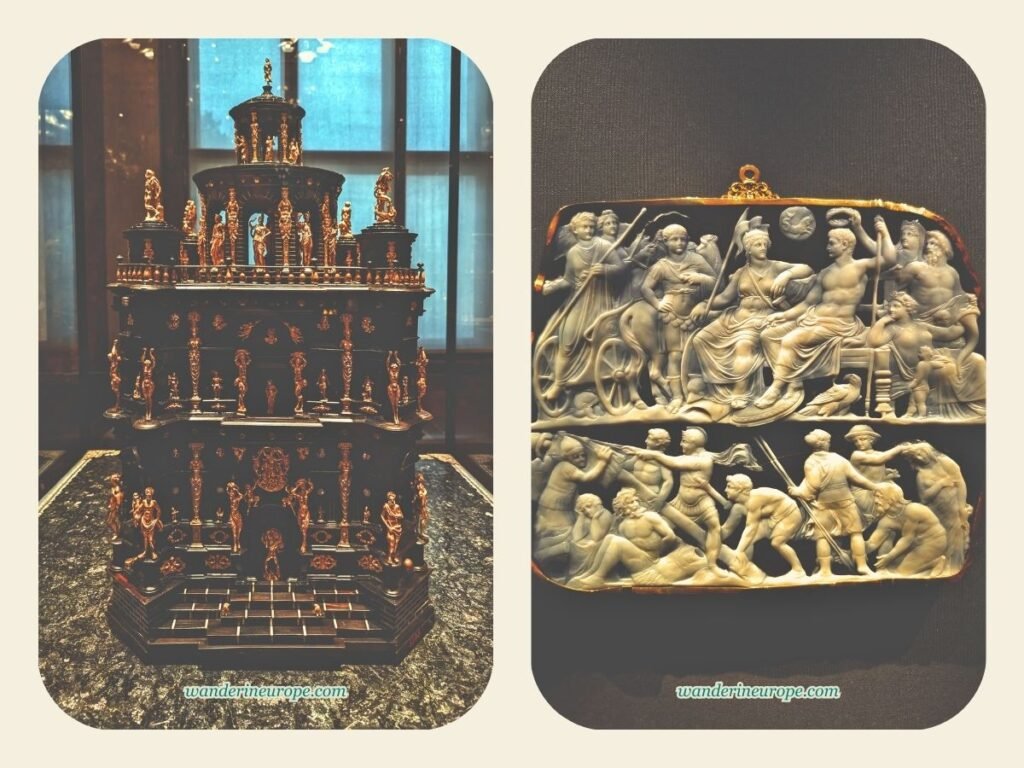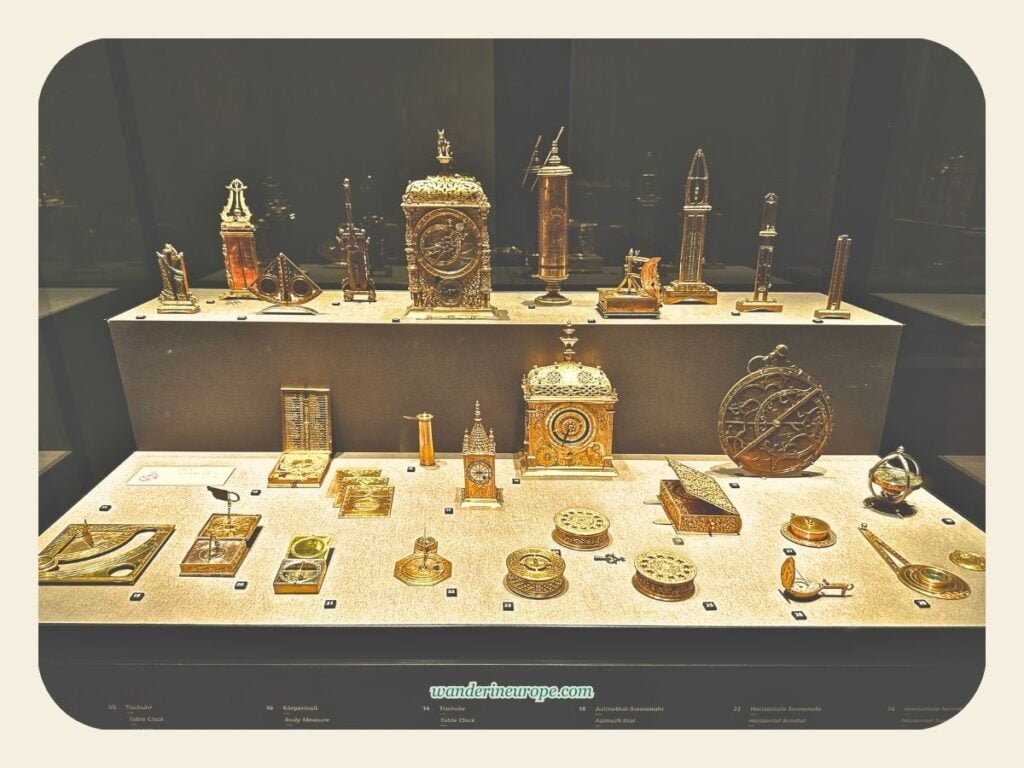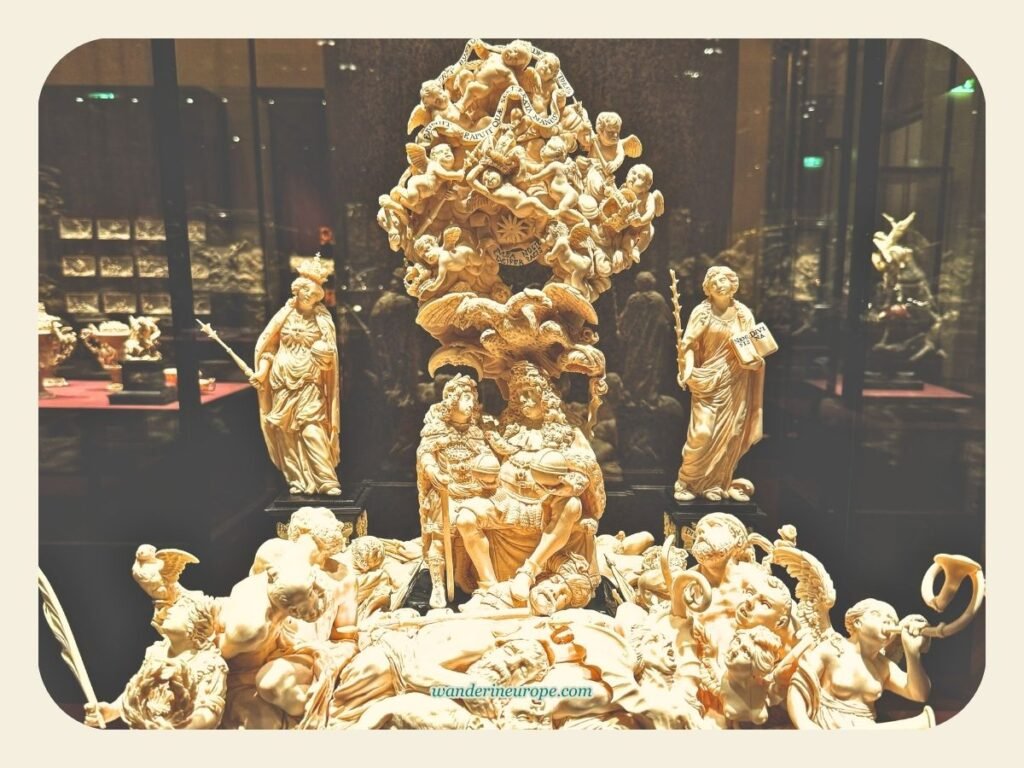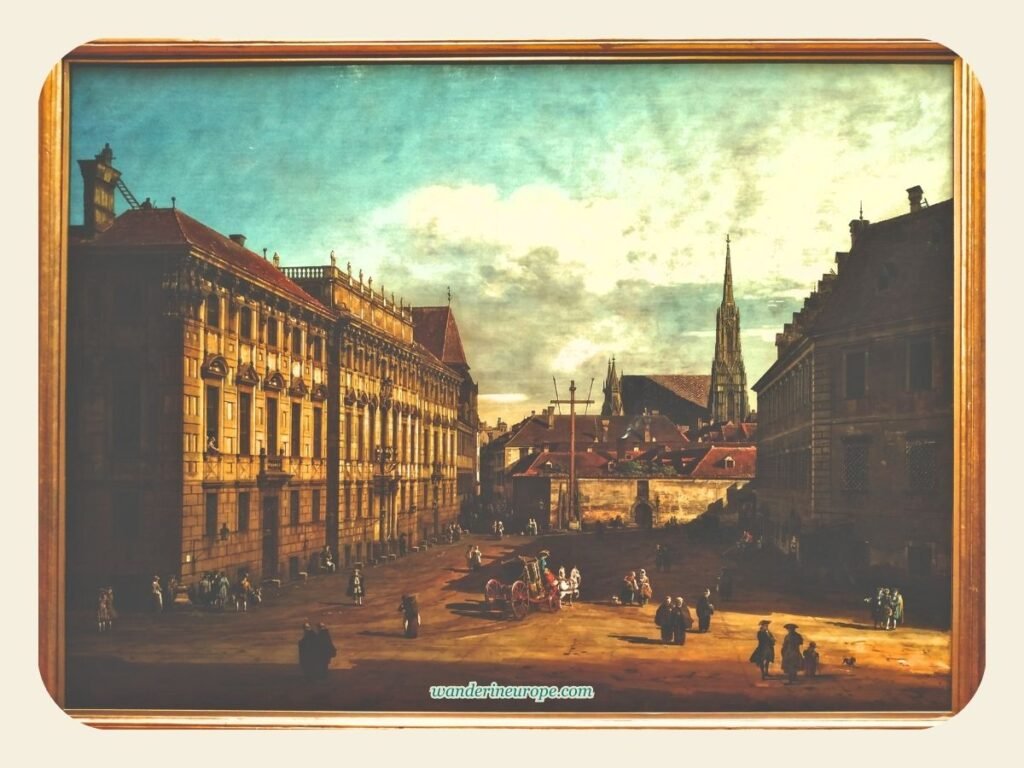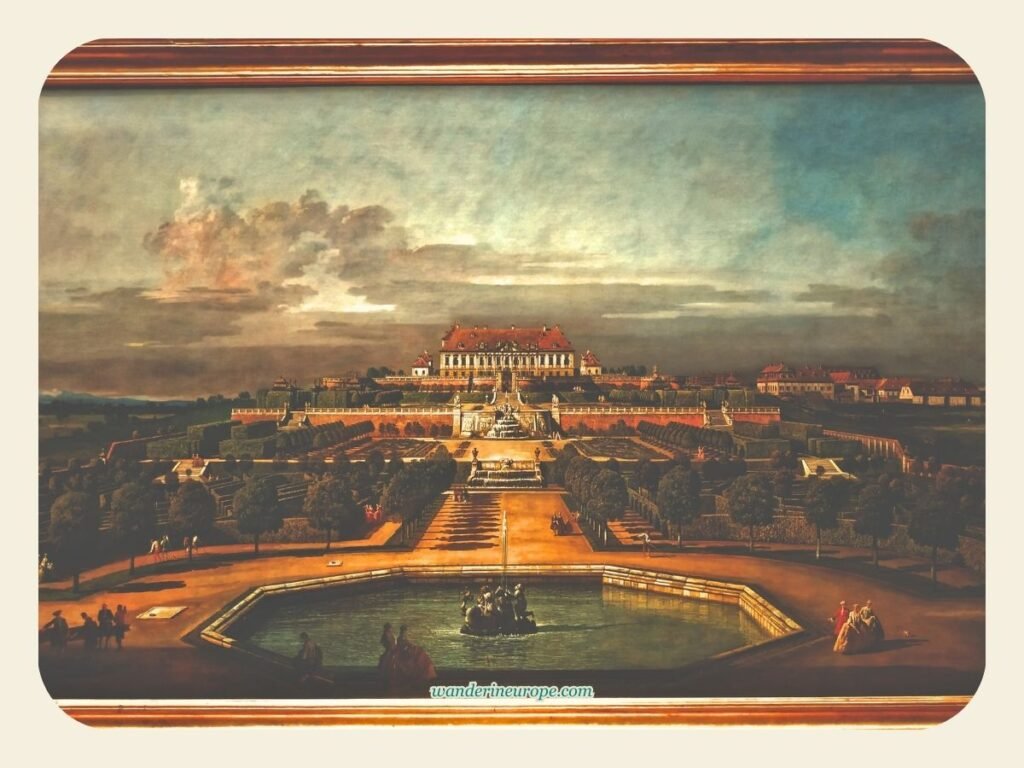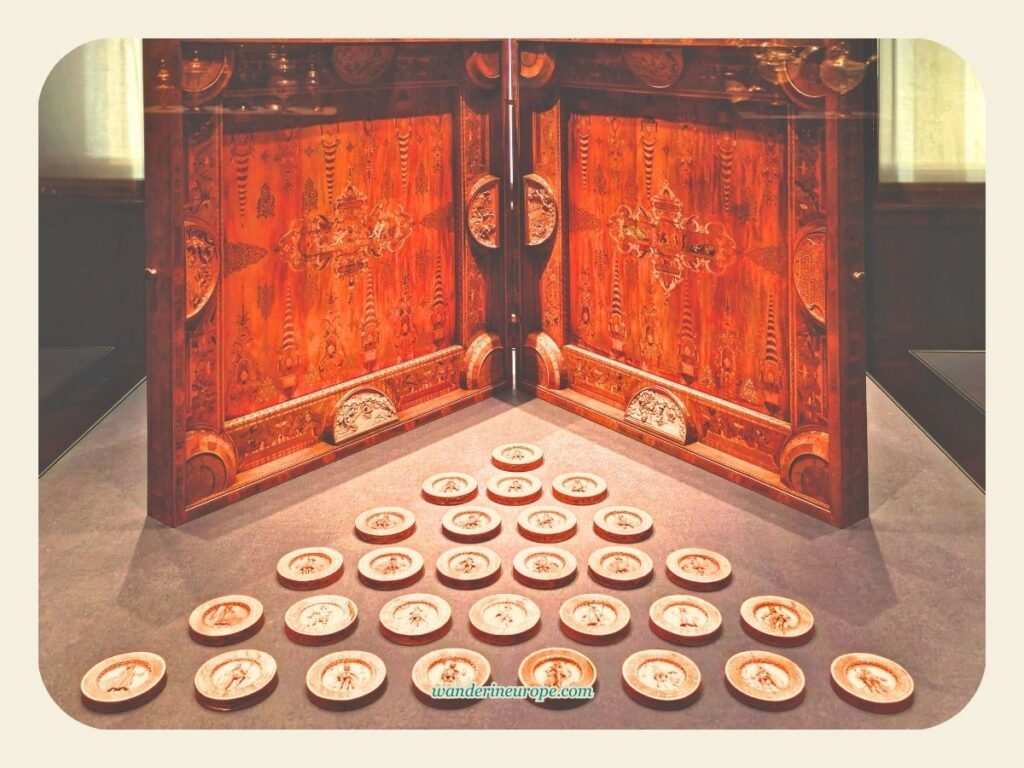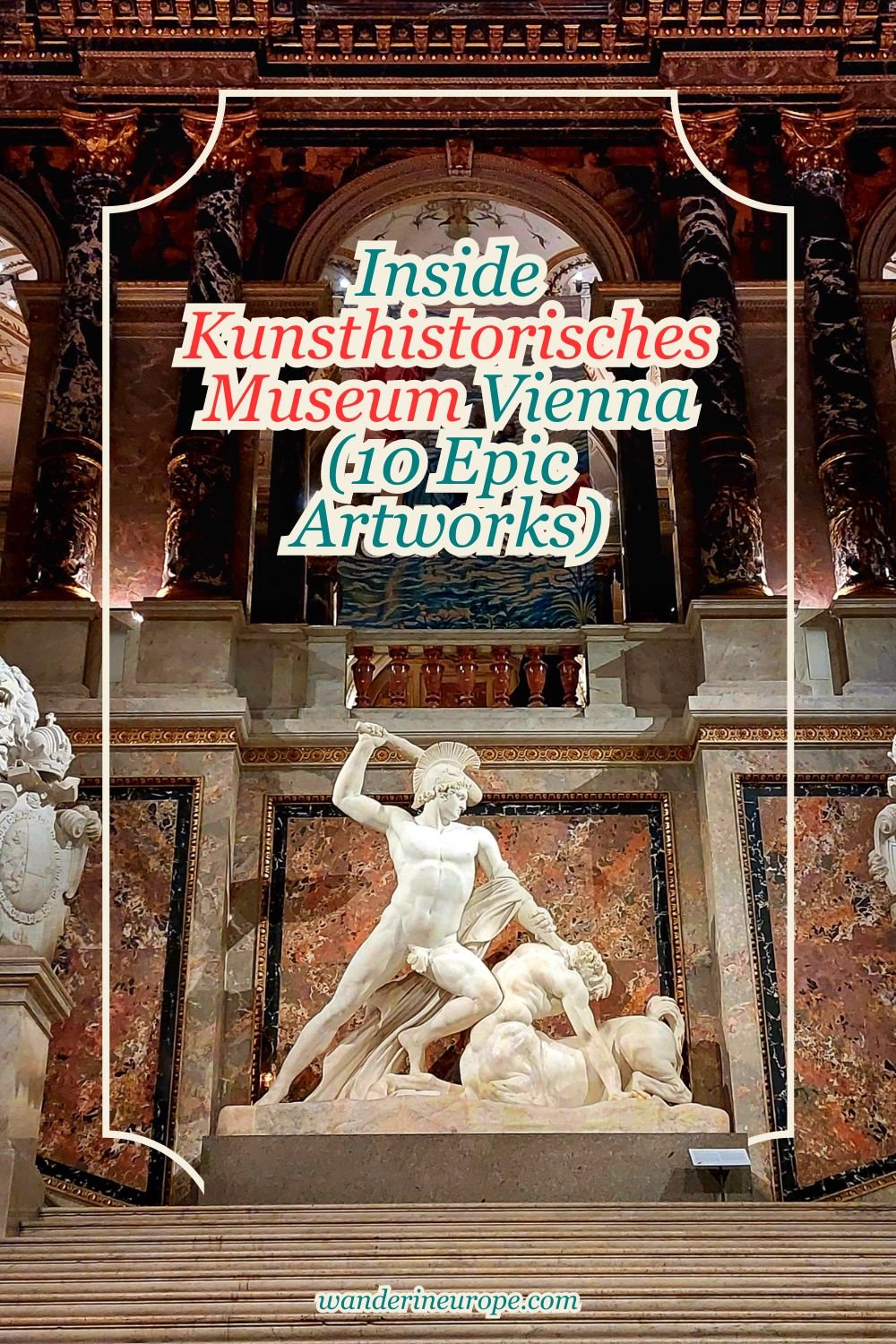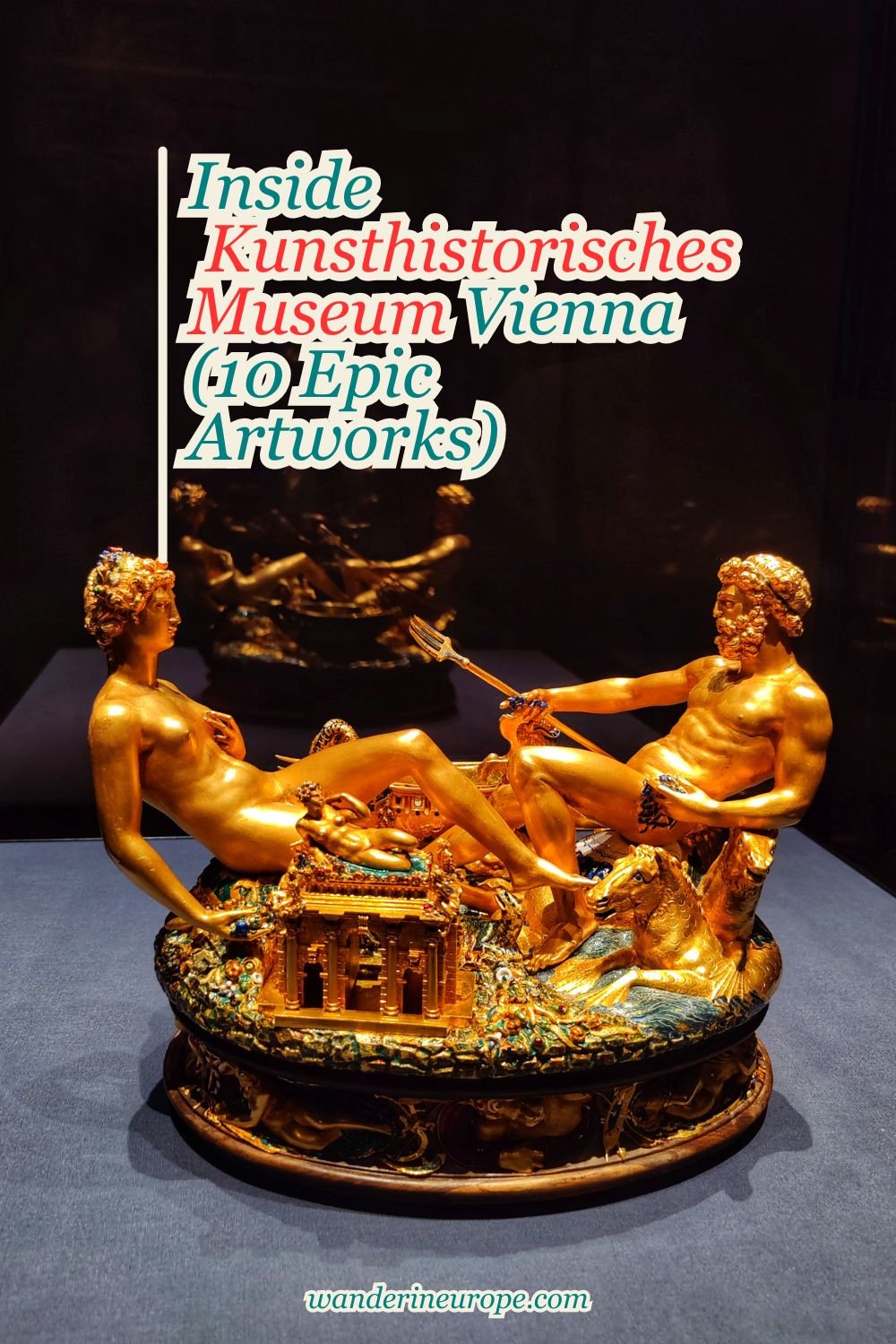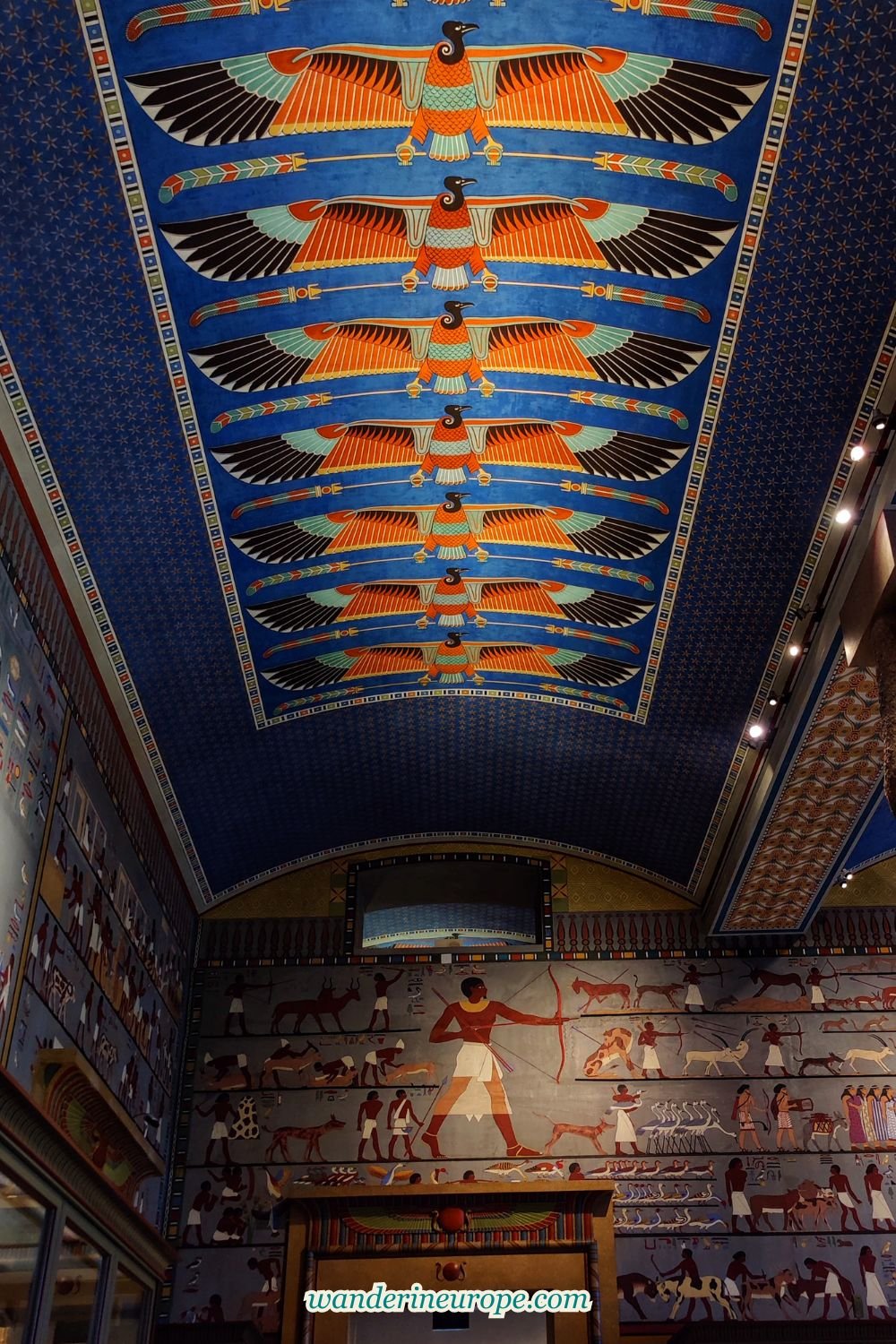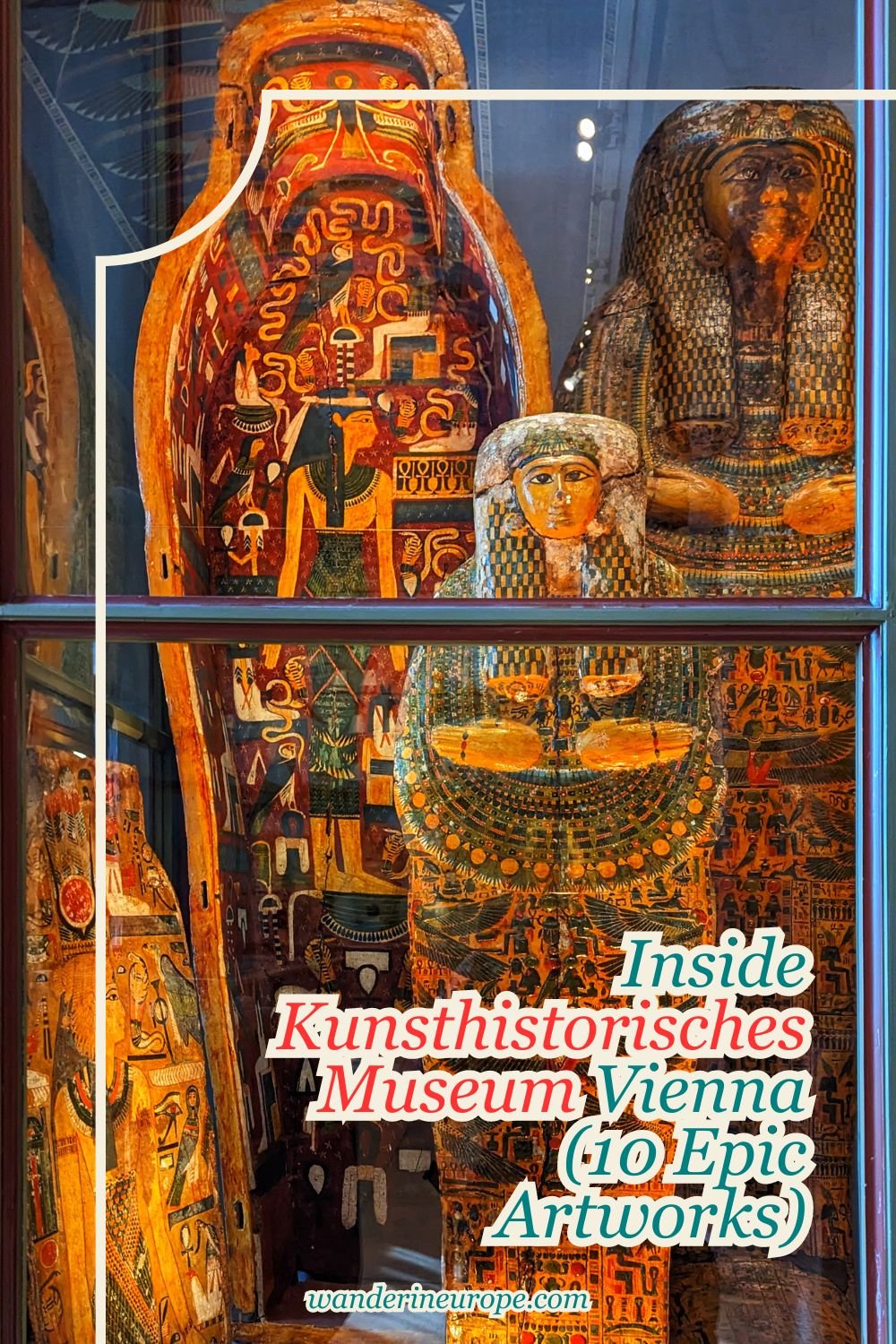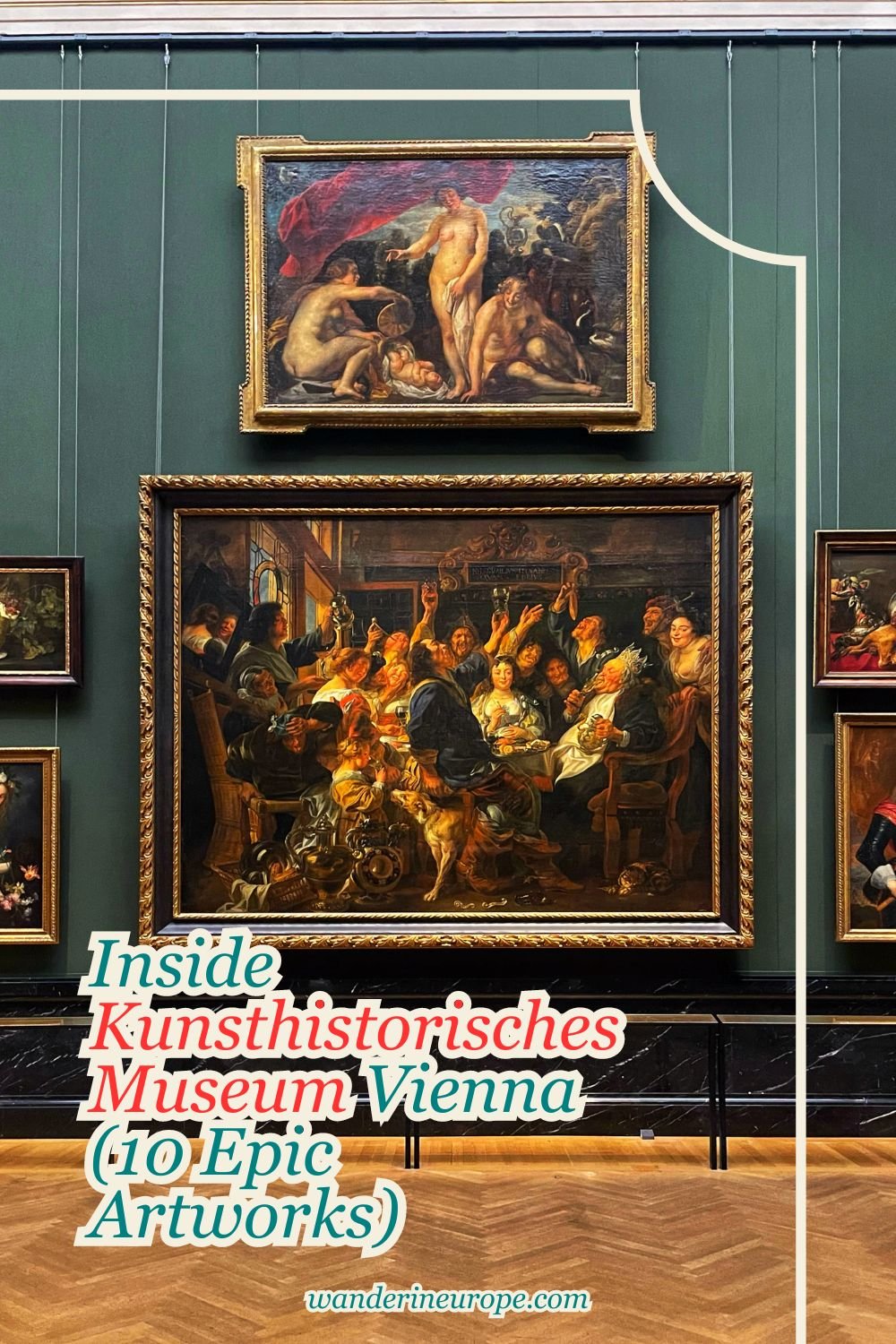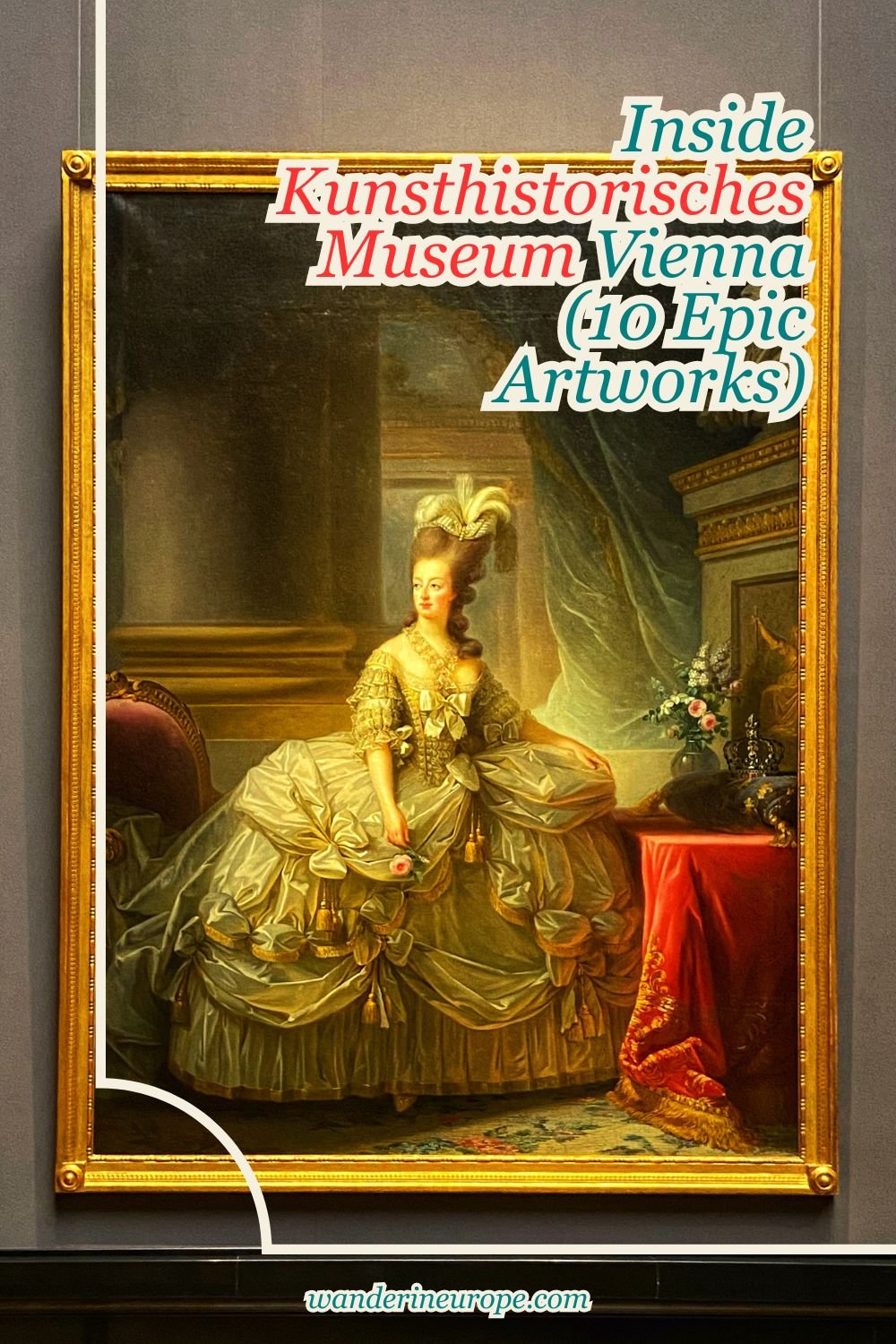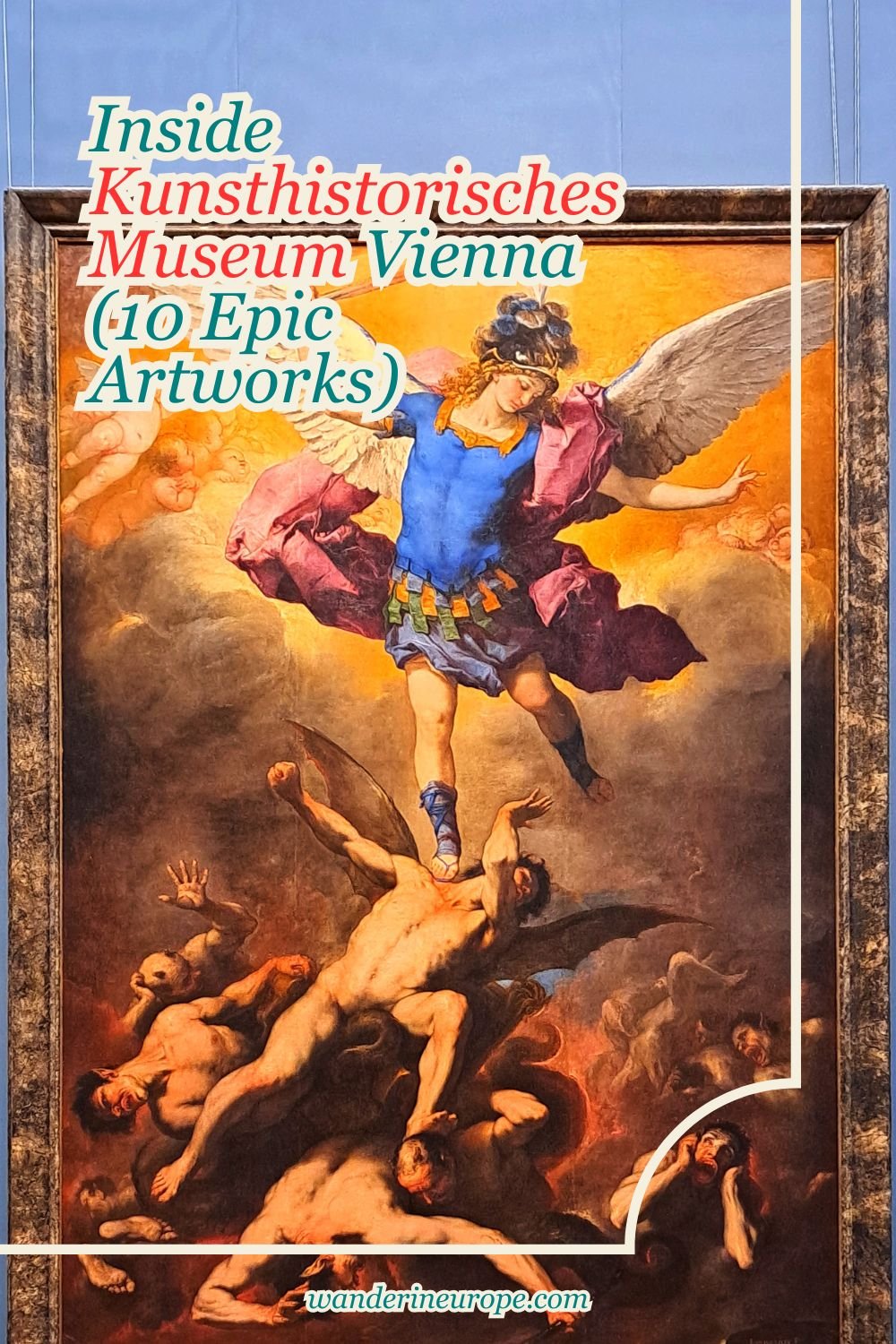Inside Kunsthistorisches Museum Vienna (10 Epic Artworks)
WanderInEurope is reader-supported. Affiliate links and ads help us keep creating useful content for you.
Summary
The exhibits of Kunsthistorisches Museum are spread across three floors of the palatial building it is located in and its collections are grouped into five major categories.


1. Egyptian and Near Eastern Collection Exhibits — It is a vast collection of over 17,000 Egyptian and Near Eastern (Nubia, Mediterranean, Arabian) artifacts, dating from 3500 BC to the early Christian era. The collection, which includes items from the funerary cult, cultural history, sculpture and relief, and the development of writing, features notable pieces like the Offering Chapel of Ka-ni-nisut and a depiction of a lion from the Ishtar Gate in Babylon. 
2. Collection of Greek and Roman Antiquities Exhibits — The Collection of Greek and Roman Antiquities features over 2,500 objects, dating from the 3rd millennium BC to the early Middle Ages. Highlights include antique cameos like the Gemma Augustea, treasures from the great migrations and early Middle Ages such as the golden treasure of Nagyszentmiklós, and masterpieces like the Brygos Cup. 
3. Picture Gallery Exhibits — originating from the House of Habsburg’s art collections, is one of the world’s largest and most significant. It emphasizes 16th-century Venetian, 17th-century Flemish, Early Netherlandish, and German Renaissance paintings. It uniquely houses works by Pieter Bruegel the Elder, along with masterpieces by Vermeer, Rembrandt, Raphael, Caravaggio, Velázquez, and Italian Baroque painters. 
4. Kunstkammer Wien Exhibits — a world-renowned collection with 20 galleries showcasing a variety of curiosities. It features over 2,200 artworks from the Renaissance and Baroque periods, including rare and unusual objects collected by Habsburg emperors. Highlights include the Saliera by Benvenuto Cellini, the Krumau Madonna, bronze statuettes, ivories, precious stone vessels, clocks, automatons, and scientific instruments. 
5. Coin Collection Exhibits — is among the world’s top five of its kind, with 600,000 objects spanning three millennia. The collection includes coins, paper money, medallions, and orders. The first hall traces the history of medals, the second focuses on the evolution of coin and paper money, and the third hall hosts special exhibitions.
A Detailed Look: What’s Inside


If you want a detailed look at the exhibits inside the Kunsthistorisches Museum, check out the museum’s official website, linked in the resources section of this post.

Must-See Exhibits
With thousands of exhibits, a visit to the Kunsthistorisches Museum can be quite overwhelming, especially if you don’t want to miss the most interesting exhibits. If you were to ask me about my favorite discoveries inside the Kunsthistorisches Museum, I have 10 to share with you. However, it’s worth noting that the curators of the museum have their own recommendations. These are exhibits unique to Vienna, and they’re definitely worth checking out (see the resources section).

More Photos: Architecture & Exhibits
To give you more ideas of what you can expect to see inside the Kunsthistorisches Museum, here are the photos of the exhibits and stunning architecture of the museum.

Museum’s Architecture

Other Exhibits

Tips For Your Visit
I recommend booking your tickets in advance to save time and avoid the long queues at the ticketing desk. If you have a Vienna Pass, you don’t need to buy a separate ticket for the Kunsthistorisches Museum as it’s already covered by the pass. Another way to access the Kunsthistorisches Museum is through a Combo Ticket. This not only lets you access the Imperial Treasury, but also helps you save money.
Planning a trip? From great hotel deals to skip-the-line tickets and affordable eSim to cheap rentals, check out the travel resources I recommend and use for a smooth and memorable trip.
Note: Booking through my links is like giving a free donation to WanderInEurope. I earn a small commission at no extra cost to you, which helps me create more helpful travel guides. Your support means a lot—thank you!
For a convenient, unique, or more enriching visit, check out these experiences and services:

Explore Vienna Further
The Kunsthistorisches Museum is one of the best experiences in Vienna, and you probably know why by now! But there are plenty of other amazing attractions in the city, so don’t forget to check them out.
Try the wanderer’s favorite experiences in Vienna. From breathtaking views to remarkable landmarks, these unforgettable places made exploring this amazing city so special.
For ideas and inspiration on making the most of your visit to Vienna, check out the travel plans below.
Find all the travel guides to Vienna and its tourist attractions below.
Resources
So, that concludes the overview of what you can expect to find in the Kunsthistorisches Museum in Vienna, as well as the 10 exhibits I believe are a must-see. If you’re interested in a map of the museum that shows the locations of the artworks and artifacts I recommend, you can download the PDF below.
To discover more interesting collections inside the Kunsthistorisches Museum at home, you may check the interactive floor plan of the Kunsthistorisches Museum and the official website of Kunsthistorisches Museum (More Information About The Collections).
Here is the list of artworks and artifacts recommended by the curators of the Kunsthistorisches Museum.
You can check the practical information page of the Kunsthistorisches Museum for the opening hours and frequently asked questions. This could help you plan your visit to the museum.

Pin this to save it for later or bookmark it to read anytime.


